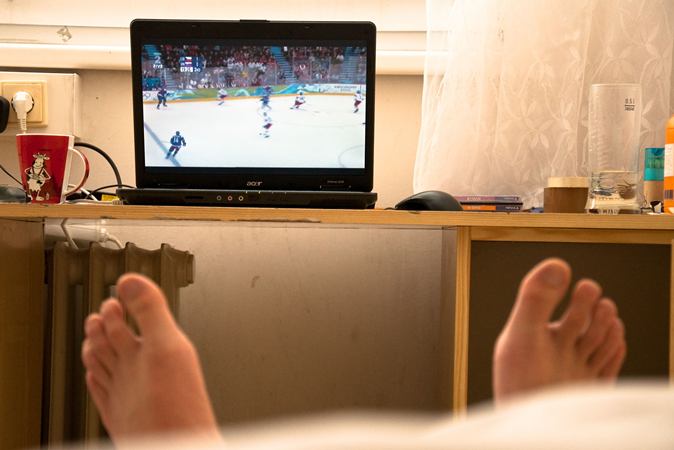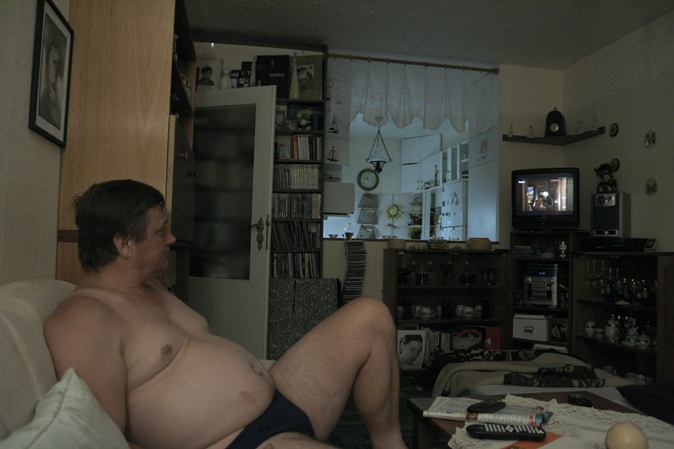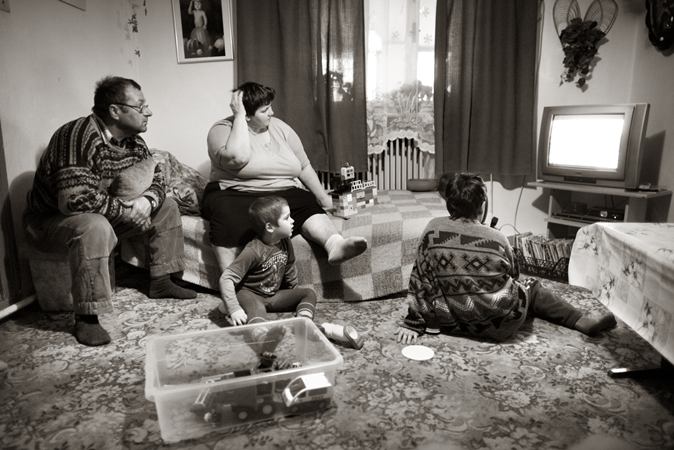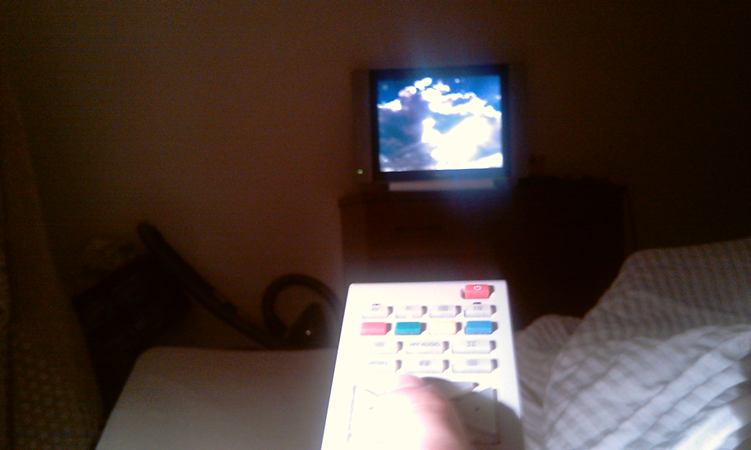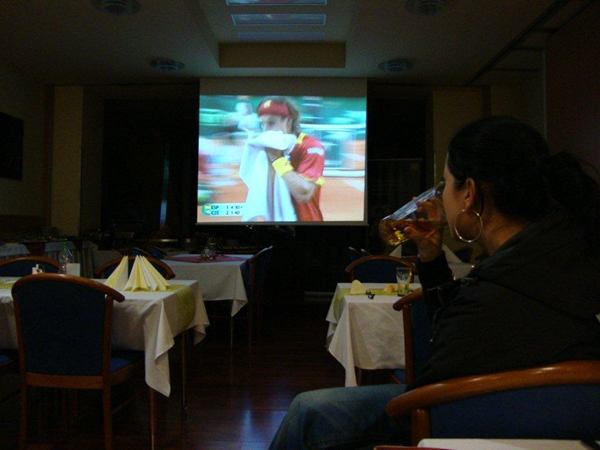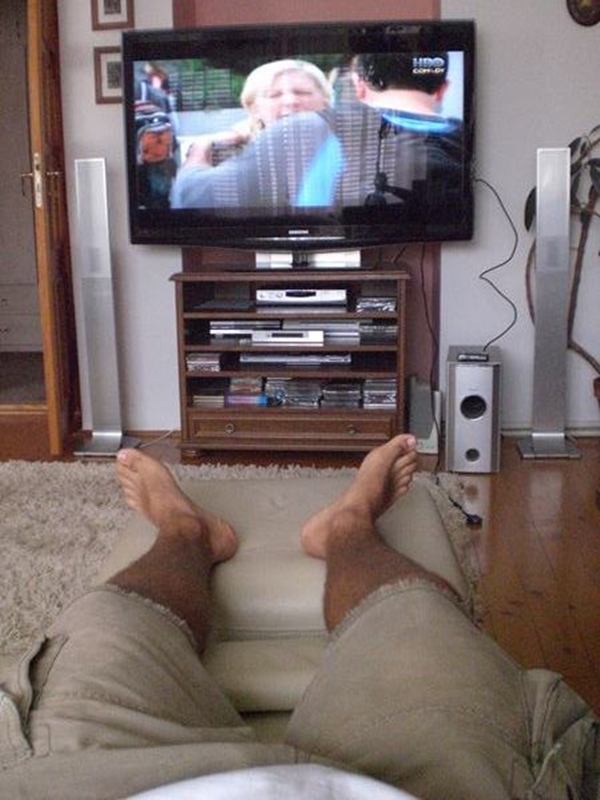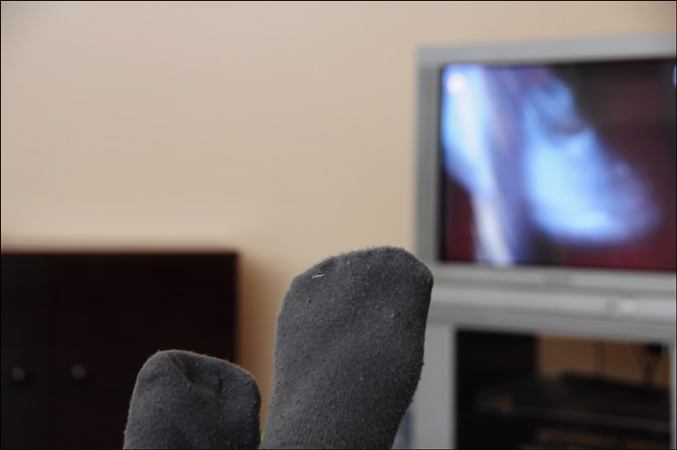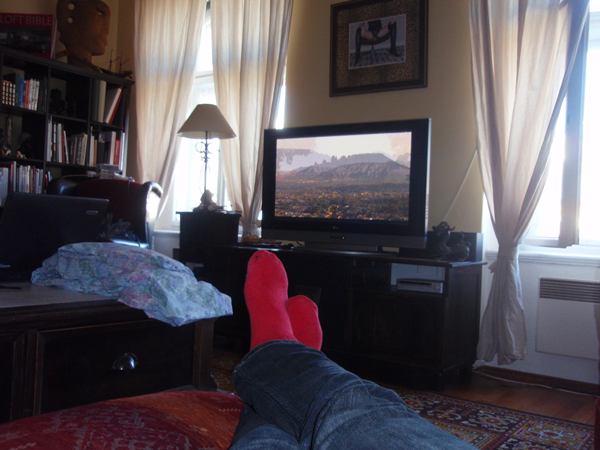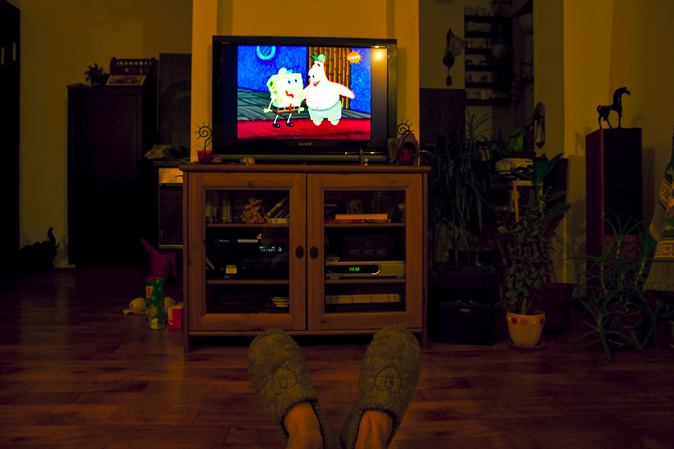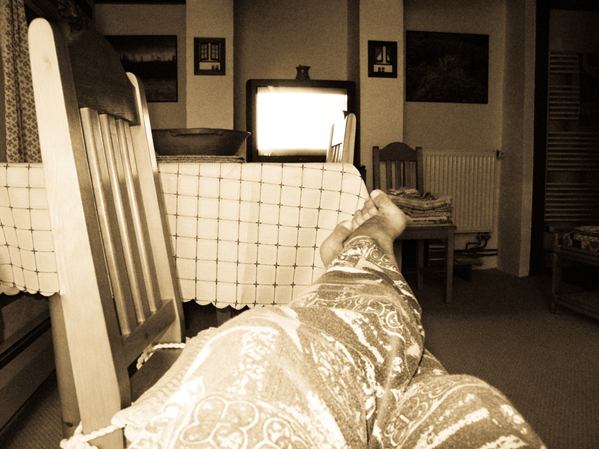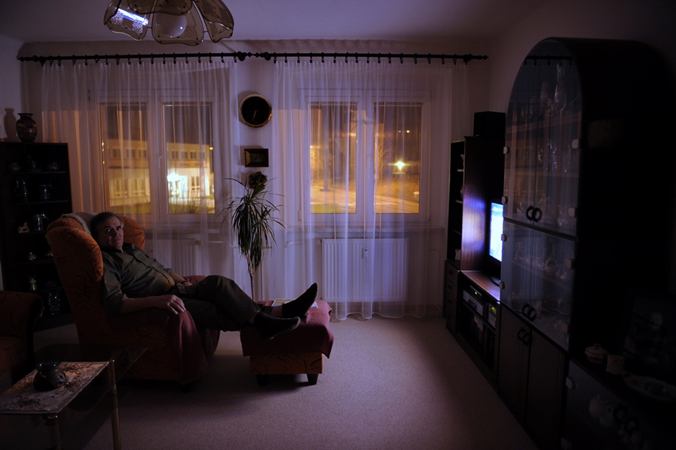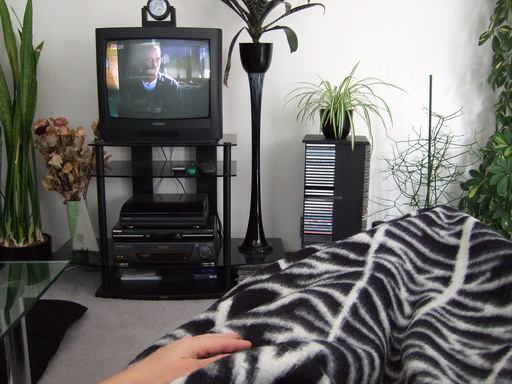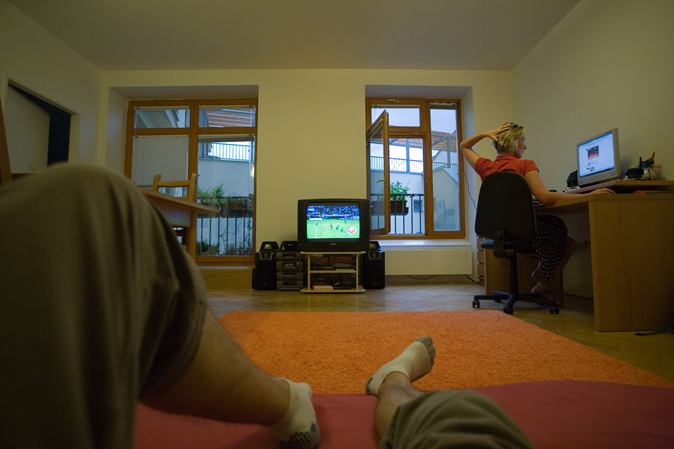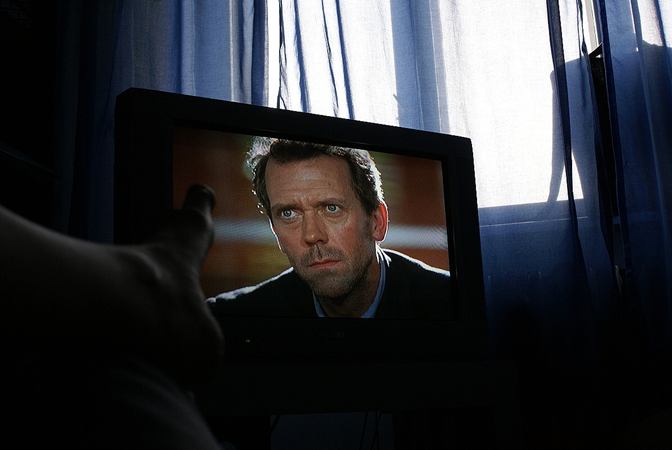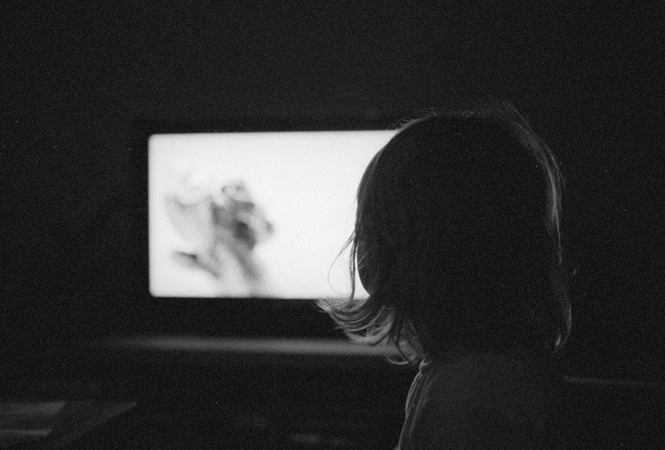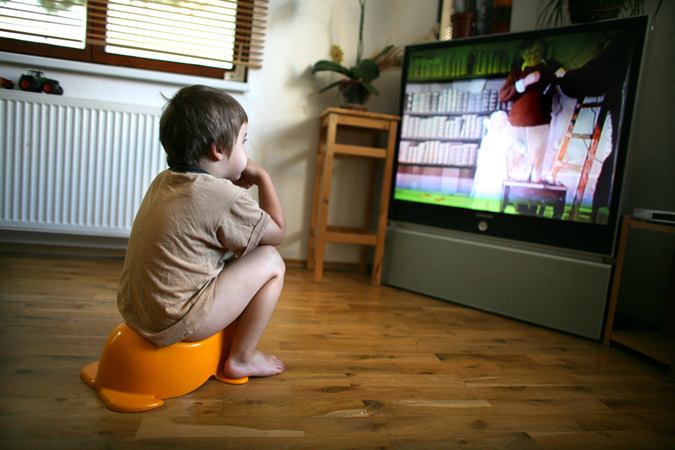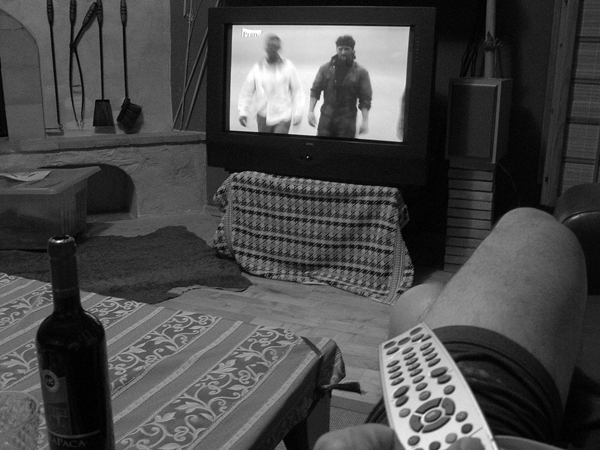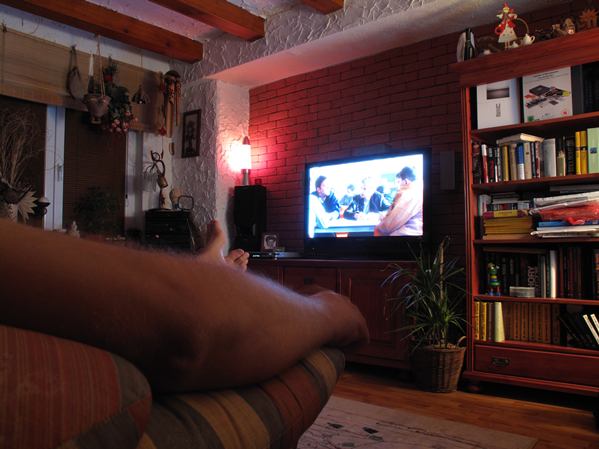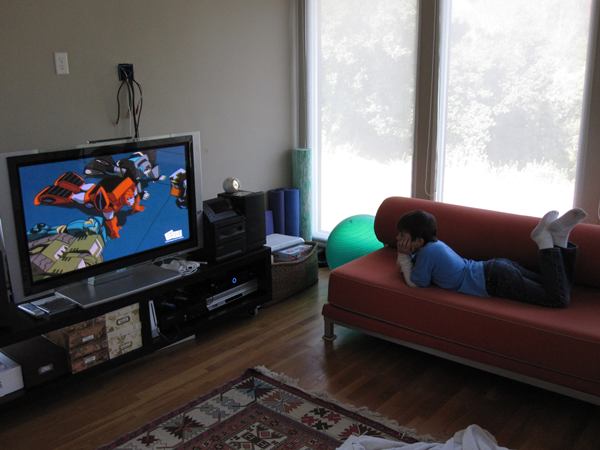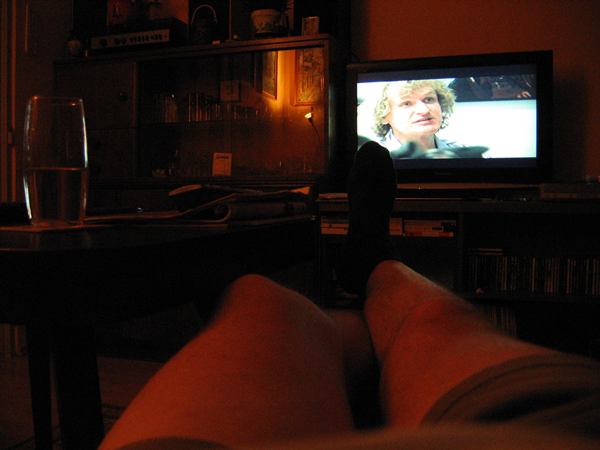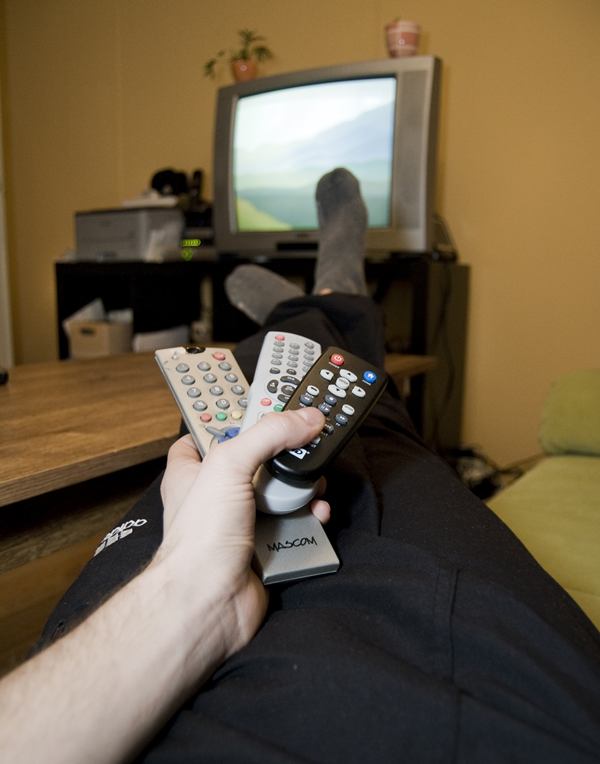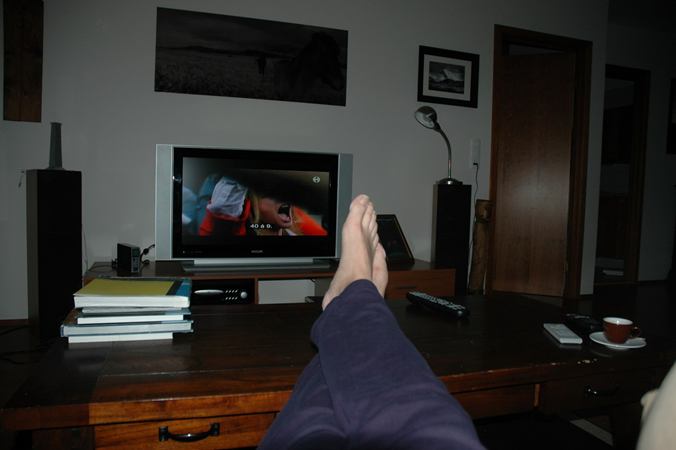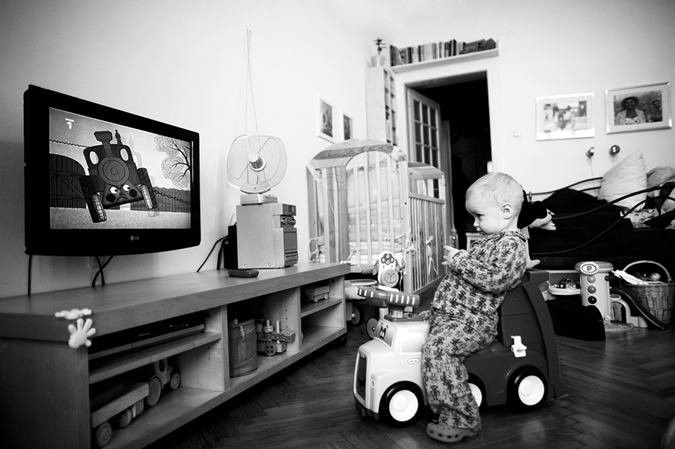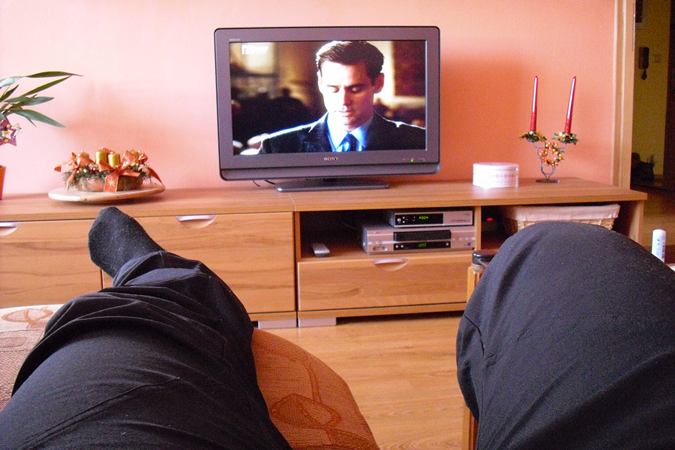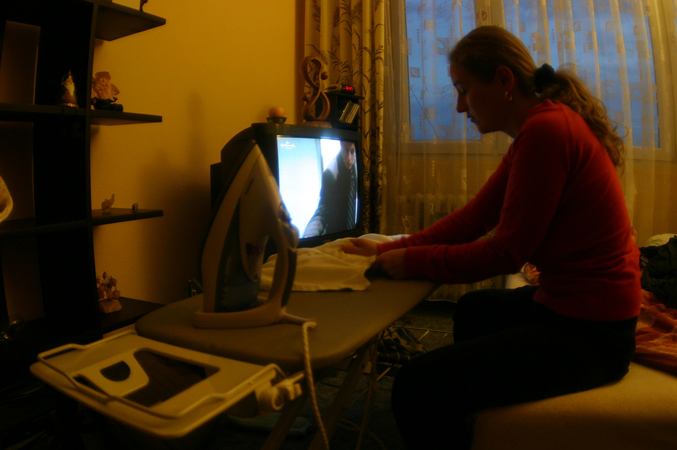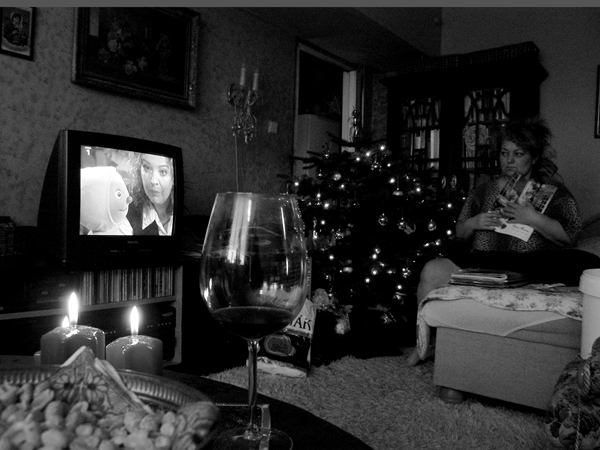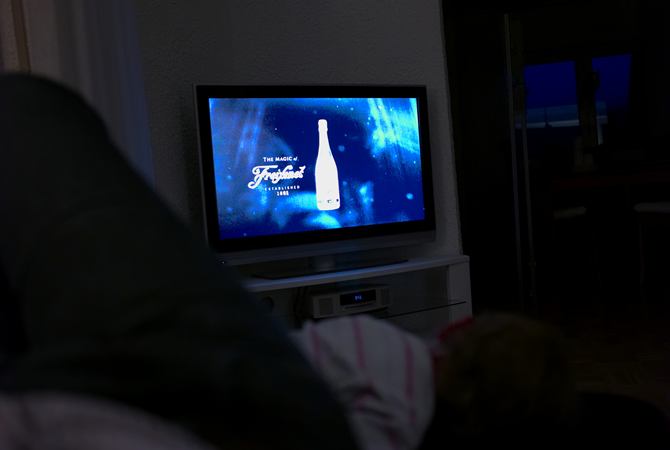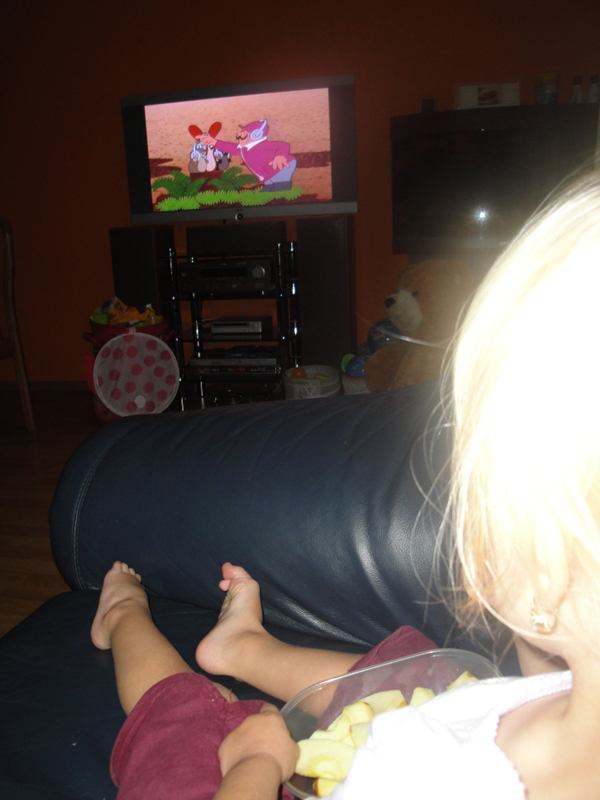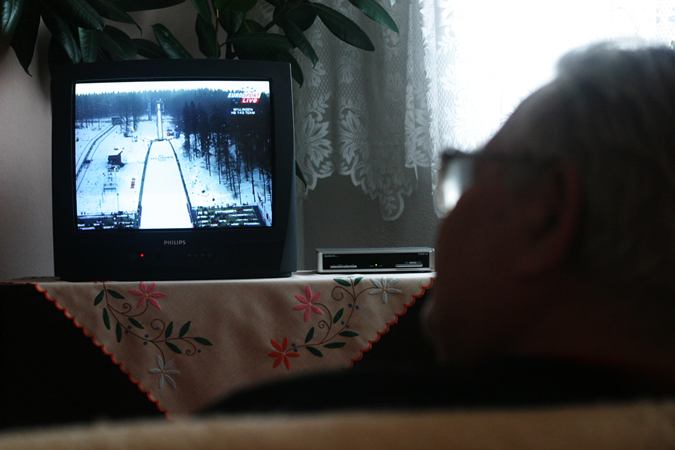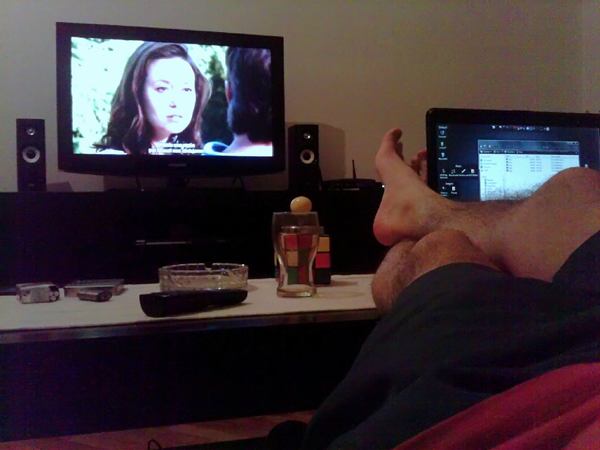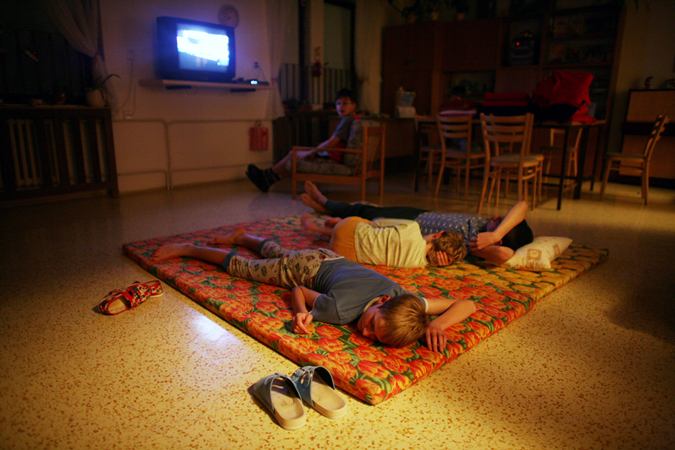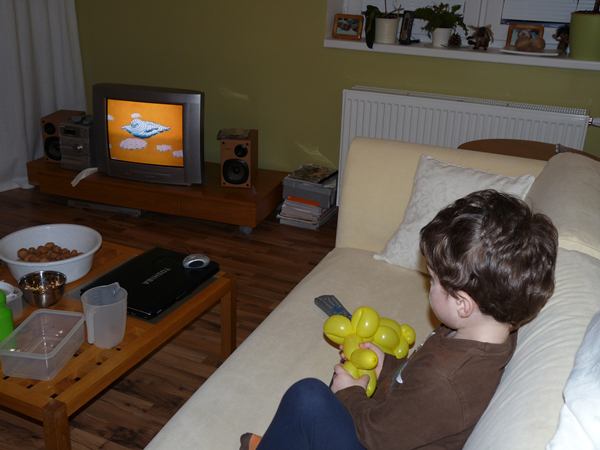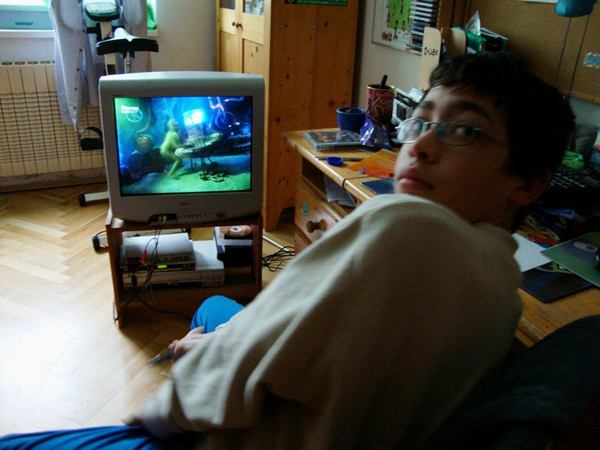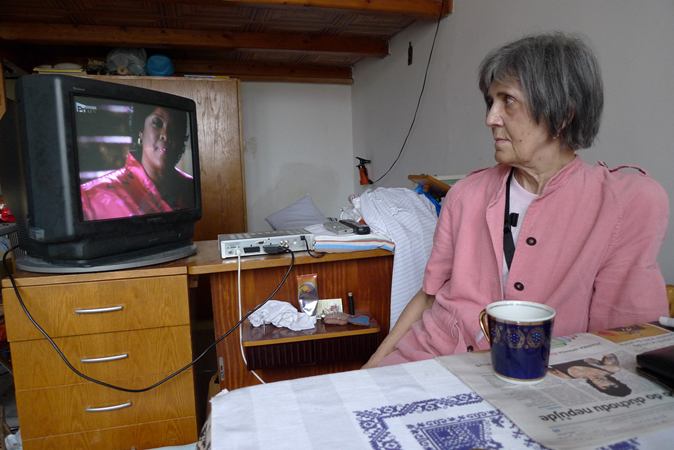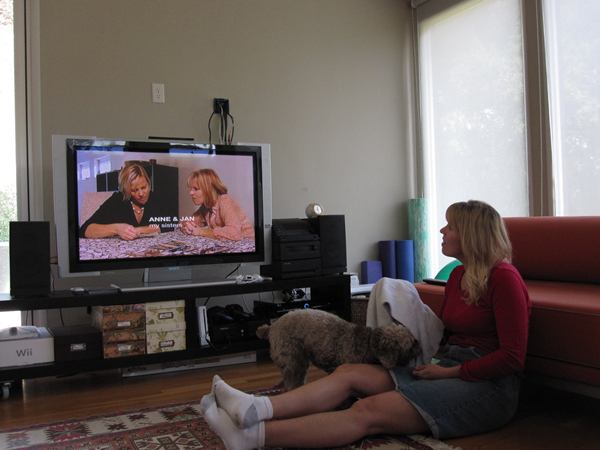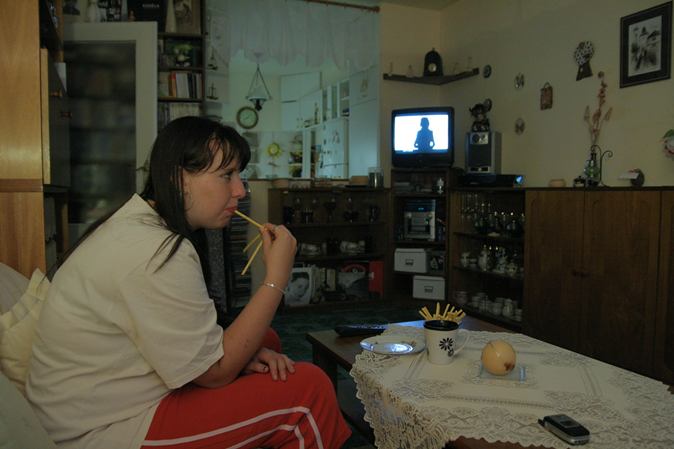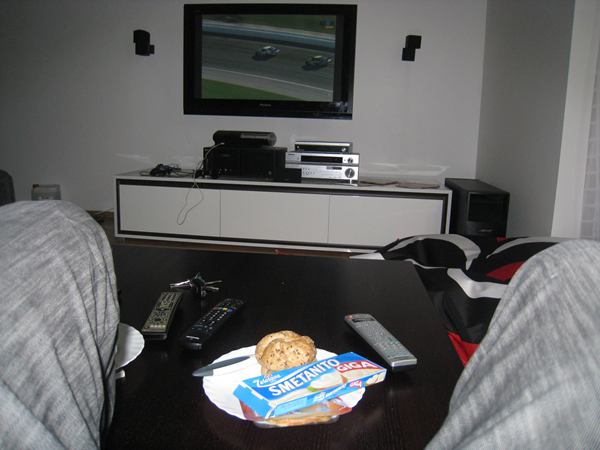The author’s column is of a different nature than other sections of Week of Life. It’s that very part which should ponder about the essence and the endeavor regarding the viability of this colossal documentary project, with WoL surely deserving such praise, having witnessed many aspects of human life and different fates. The columns and their authors respectively, should derive their thoughts from this very idea, draw the energy from the photos themselves and thereafter process that and put on paper in a way typical of their narrative style, presenting us with advice, suggestions, the knowledge they’ve gained or simply ‘just’ their prudent ideas. These ideas should not only be educational, but perhaps also a little scientific. They should not be beneficial only to the people that are already a part of the WoL project, but also to those that somehow find their way here coming from a different world. Maybe then and as a result they will like it here JUST THAT BIT MORE and decide to stay.
Archiv autora: Zdeněk Kamrla
The phenomenon of photography
Photography is perhaps the most characteristic phenomenon of our age. It’s irreplaceable in science, in the media, and has become so connected to ordinary life that we no longer ponder its multiple forms, functions and exposure. We have taken photography for granted, but at the same time, it has ironically become a significant part of our reality.
We can only assume that hopefully, the next generation will be able to absorb intellectually its indisputable role in the field of arts. They will no longer disparage photography as an artist’s means of expression or ignore it amongst other forms of art just because it has found practical uses and has been subject to mass dispersion throughout civilization.
Photography and architecture are by far the most loyal forms of art. Nevertheless, not every structure is an artistic masterpiece; the same applies to photographs. Both of these fields surprisingly have a lot in common; they create the space we flow in and determine its visual aspect. Both fulfill our needs and create new ones. Similarly, they have multiple layers of nature and character, as well as a debatable fate. We live within images, symbols and signs. Etymology explains the origin of the word photography in two Greek words: phos (light) and graphé (drawing / brush).
 |
| A picture giving face to the Great Depression, author: Dorothea Lange |
‘Drawing with light’, a person cannot resist this notion, symbolizing the genesis of a new image. No wonder we are predetermined to perceive and judge photography based on the mechanism known as artistic painting. Not only the philosophy but also the history of art is obsessed with this comparison variations of it. However, it is an attempt to pass judgment on and systematize something unknown by a proven entity. Photography is an individual factor in itself. It does not need to be compared to other aspects of art or anything else for that matter. The belief that photography is just a continuation of paintings is as pathetic as claiming that man has evolved from monkeys. Just as it was the case of human kind evolving in parallel with apes as relatives, the same applies to the evolution of photography and painting (i.e. the remark that photography is only a matter of the new modern age is short-sighted). People need to realize that the invention of ‘camera obscura’ and photography itself has come a long way.
 |
| The first photograph, author: Joseph Nicéphore Niépce |
Human nature urges us to document our existence and create, as well as to follow other significant instincts like destruction and reproduction. During the Paleolithic age, also known as the Stone Age, 2.7mil to 2 thousand years before Christ, stone was obviously the hit of the era. Our dear ancestors were amazed by stone and remained dazed by its technical possibilities. Everyone simply liked stone suddenly. ‘Stone for every family’ was probably the chant of the eldest and skilful homo habilis; the upstanding homo erectus, and, lastly, the reasonable homo sapiens. Who would have thought that ordinary stone would start off the evolution of our civilization in the direction of brighter tomorrows? The last stage of the Paleolithic era gave birth to the first cave paintings, 15 to 30 thousand years ago. This shows that humans already tended to create and document despite their limited skills and knowledge. Some of the conventionalized paintings illustrate that humans painted not only to document random things, but artistically documented their existence and reality to. They perfected their technique on clay, ash, and charcoal. Jumping a few thousand years ahead to the 7th century, it was even further perfected by oil. This is evident from the discovery by French scientists of a complex of caves in the Afghani Bamyan, where we witness the oldest oil paintings in the world—Buddhist paintings.
‘Drawing with light’
Not long after, a fair 600 years later in the 13th century, oil arrived in educated Europe. The further evolution of artistic painting is quite accurately known, since the history of art is taught in similar fashion all over Europe, and no one has really deviated from this Eurocentric precedent. Only a handful of bizarre philosophic-aesthetic theories stray away.
Where does the path of photography begin? 350 years before Christ, when Aristotle discovered the principle of camera obscura. 1,996 years later, in the year 1646, the first laterna magica was invented, and in the year 1825, Nicéphore Niépce developed the oldest known photo in the world. A rapid succession of events followed: In 1888, George Eastman patented the first box camera and introduced the first commercially successful camera designed for roll film to the market. He also registered the Kodak trademark. The first of the ‘easy to use’ products, Kodak Brownie N° 1 box camera, was advertised that same year.
In 1948, the legendary brand Hasselblad enters the market with its first product. In the same year, people were able to purchase a Polaroid with its ‘instant’ photos. 21 years later, Willard Boyle and George E. Smith invented the first CCD chip in Bell’s laboratories. Within the scope of the history of photography, this technology brings us to the present time, influencing the entire world. In 1994, the market was enriched by the first digital camera with CCD technology, distributed on mass scale: AppleQuickTake100. CCD technology – Charge coupled device – exploits the advantages of chip instead of celluloid film. In crude terms, the photosensitive circuit detects the light and converts it to an electric charge, which is then measured and converted to a digital image. This kind of system is composed of an enormous amount of ‘miniature cells’ catching light individually. The digital image is assembled from particular points – pixels; the more ‘cells’ a sensor has, the higher resolution of the resulting digital image. In other words, by this process we gain more data. As a matter of fact, the mechanism closely resembles the functions of the human eye. Thus, this is the reality of the present. The technological progress of the photographic camera cannot be confused with the history of photography, especially not with the artistic part. Nevertheless, it’s always an advantage to have at least the slightest idea about things that come across and affect our everyday lives.
 |
| A photo that destroyed one of the industrial sectors, author: Murray Becker |
The purpose of technology is to help us and make our lives easier. Today, it is as easy as ever just to pick up a camera and practically take a picture of anything we desire. As a result, the practice of photography has changed compared to previous times: Comparing the present situation to the one a hundred years earlier, we come to the conclusion that in those days, the target situations to be shot by the camera were carefully chosen, composed and arranged. Taking pictures was more of an occasional event. The outcome was usually artificial—perfectly satisfying the setup and arrangement. Today, photos are not bound to some sort of responsibility for the result. The process of photography is not as elaborate anymore and is nowhere as expensive for the ordinary person, who now has the ability to afford spontaneous and imminent images. There are no boundaries for the creative mind. Therefore, the camera’s notation of certain situations can be far more sincere than before.
Lately, the trend has reached the situation where we hear negative evaluations and opinions about the present time; that photography is heading towards a decadent slope, that its value is degraded by postproduction, that it has become profane, and, finally, that its standard has dropped both on the amateur every-day level, as well as on the artistic professional level. Sentimental memories follow, praising the days when photography was ‘worthy’.
 |
| A photo that made surrealism real, author: Philippe Halsman |
Hardly anybody realizes that these beliefs lead to a dead end. The spiritual quality of photography is not based on the technology used, since technology is not the result but only the tool. According to what you desire, you are free to choose the respective tool. If you choose to take pictures on a large light sensitive glass with a box camera and would like to return to the wet collodion process, no one will stand in your way. On the other hand, if you chose to use the Hasselblad H4D-40 and take pictures in the RAW format in the 1880s, tough luck. The present day simply offers a wider range of possibilities, nothing more and nothing less. The photography of old cannot be considered better just on the basis of being more respectable, scarce and a matter of rare occasion, since people could not simply afford any other approach. The same applies to the present day. Photography cannot be labeled as decadent just because it has expanded on a massive scale. Present day photography can’t be discriminated against based on the technological-economic aspects resulting in its affordability. The conditions are far more favorable today than a hundred years ago, true, but it is surely not the decisive and relative criterion of the consequent aesthetic experience. The gifts of progress need to be utilized without guilt and remorse. And besides, mastering digital technology requires similar expertise as handling film does, if a person wants to accomplish truly top-notch results. You need your eye and a sensibility for light no matter what. A perfect photo always stands out, no matter how many people around us own a camera.
“…sentimental memories, praising the days when photography was ‘worthy’.”
The Week of Life project allows for a wonderful thing: it enables every one of us to illustrate our week, documented by photographs, in pure democratic fashion. It creates a mosaic consisting of individuals and their photographic ‘manuscripts’. These photos show who we are, what we do, what we consider important, what we like to share and disclose to others or on the contrary, what we indirectly try to keep in our private sphere. This indirect approach tells a lot about us: how we perceive things around us, how we ‘filter’ our reality, what is our inner order of values, how spontaneous we are, or the other way around, what our abilities are when it comes to composing with reason. Week of Life works as an all-round visual exploration probe.
Members of many cultures participate on this project. Every culture predestines how we view and perceive the world around us, be it in form of the language we speak and think in or the respective religion. For example, each society has its own perception of time and moreover, every one of us individually creates an attitude of one’s self. Personally, I identify myself with Heidegger’s conception of time and life as a ‘question of being’, ‘da sein’ to be exact. I consider his theory regarding the sense of being and creation of time as the most meaningful and concise. On the other hand, we can expect a Hindu, for instance, to distance himself from my views and beliefs as he or she lives in his or her own philosophical system, and so on. The perception of time is just a small raindrop in a pool of various factors that influence our attitude towards life. Let us compare, for example, the idea of beauty of individual societies, the notions of taboo within different cultures, various habits, the terms of social coexistence, the functional models of family life, etc. etc. All of this makes us who we are as well as determines our ability to reflect upon miscellaneous events and interpret them. Therefore, all of this is considered a factor when we press the shutter of a camera. We no longer need to paint the inside of a cave; we simply hang photos on our walls.
Therefore, Week of Life gathers testimonials in the form of photographs. And after some time passes by, it would certainly be interesting to examine these photos closely and perhaps come up with several comparisons. The individual pieces both directly and indirectly predicate the status of the society and its cultural development. The potential of the ‘Week’ is substantial regarding the essence of scientific visual studies.
Furthermore, it is extremely interesting to inspect one another, as well as ourselves, while gathering memories—moments rare as well as common, and so on. Most sets also include self-portraits, as though we follow some kind of an instinct to perpetuate ourselves. The way we approach our self-portrait has a lot to say emotionally in itself. One person captures only parts of his or her body – for example, his feet at rest or his own shadow or reflection. Another person will stand in front of a mirror naked and without hesitation capture him/her self ‘totally’. Many of us decide to conceive this photographic documentary in a specific style, which is ever more interesting, since we can monitor our own games and quirks.
 |
| A photograph that enabled genius minds to have a sense of humor, author: Arthur Sasse |
Photography is a democratic medium. It captures positive events but also negative ones, as well as the occasional pathological phenomenon. Thanks to this medium we can not only inform others that we spent our vacation in the Canary Islands, but also show that children in the north of Kenya are dying of hunger and as a consequence of deadly diseases. Through the means of photography we can document such elusive moments as a snowflake melting the instant it lands on our hand. We can catch precious moments such as the first gasps for air of a new-born child. And from a different perspective, we can capture things of a cruel nature, for instance the immediate expression of a person’s face stunned by the sight of a war-infested city bombarded to ashes. A Photo never illustrates more than what really is happening in the world.
Report Kenya 2010 – 2nd part
Jiří Pergl, Enterpreneur, Czech Republic
Report Kenya 2010 – 1st part
15.1. Nanyuki
In the morning we finished food-sorting and found we have no rice, beans, nor green grams (a kind of local green berry).
I guess we counted wrong, so we return to the center of Nanyuki and buy the rest of the needed supplies so everybody gets the same amount. While the boys are sorting the food, we go with Hellen to set up an account at Standard Chartered Bank of Kenya for all our transactions, such as money transfers from adoptive parents, money to be used for various purposes (school, doctor, hospitals, etc.) and also so we comply with the requirements of Kenya’s government, which likes nothing more than to oversee any transactions where money is involved. Just to set up an account for an organization like OMDC in Kenya you need five people. Only I and our lawyer can withdraw money. Others must undersign and supply photos, ID and documentation certifying where they live. One really funny part is that the bank does not make copies for you, and to do so you have to run to the shop across the street; the machine they have must be one of the first ones ever produced and it produces shabby copies. If the bank does not accept the result, only then will they use the new Minolta copier they have right there on the desk. We spent five and a half hours in the bank to start one account. Coffee or water? Are you mad? This is Kenya! The fact is that they fill in everything by hand, and they spend ages gluing the photos to the documents. This I can accept. But the copying ordeal really tested my resolve.
That afternoon, after a phone call, we went to visit a local architect. Why? As I said, I wanted to build new children’s home in Doldol and I intended to come trough. I put forth my idea to the architect about a home for 60 kids, including a school, church, kitchen, lounge, bedrooms, washrooms, and a fence. I proposed a U-shaped complex and he informed me that his take is 6% of the complete cost. Needles to say, I flinched. After a long discussion where I carefully explained exactly what the purpose of this project was, he finally had a change of heart and agreed to give us a discount and charged 55 thousand for the complete project. This does not include building inspections (only round stamps for revisions). He claims he also likes children, so I guess we are lucky. I agreed to give him a deposit of 50% (again from my own pocket) and I insisted he finish the whole project in 10 days (I am returning home then). He shook his head, but said it could be done. We shall see.
Now to the children’s home in Nanyuki. We brought a lot of sweets, lollipops and 20 children’s films on DVDs in English. No food here, as I mentioned, the government has started to care about this place and the kids don’t go hungry any more. There are two new residents here, little sisters Brenda and Grace. One of them got here 14 days ago terribly beaten, face bloodied and burned by the blade of a knife that had been heated over a fire. That really got to me and I will try to get the girls in our adoption program. Later we play some games, sing a few songs, take pictures together, pass the sweets around and all of a sudden evening is upon us.
A journalist from Daily News Kenya is visiting our resort and he wants to talk to me. He promises he will do everything to give our organization maximum exposure with the most important local companies (Telefonica Safari, Barclay’s bank and others) that have resources to help us. Hellen is going to take care of that in the future and she will try to get some donations and sponsors for the construction of our orphanage and eventually for its upkeep. The journalist and I talk about the Czech Republic and our plans here in Kenya. How did I get involved, and so on. He tells me about that slaughtered village near Doldol. All the newspapers in Kenya are now writing about this incident. About 10 little girls that survived the carnage and then escaped are mentioned together with some other girls who escaped from marriages they were forced into. Supposedly they ran for 200 km, some of them barefoot, without provisions and water. They made it through the territory of elephants, lions and other wild animals towards Nanyuki. Just before they reached the town, one of the local humanitarian organizations placed half of them into a children’s home in Nanyuki. The second half of the group is being cared for by an Italian organization that runs an orphanage at the outskirts of Nanyuki. Unfortunately both facilities are full and the girls won’t be able to stay there more than three to four days. Such a touching story. We should do something about this. We have already, together with our social worker, come up with something but let’s get to that bit later..
PS – The LG service center still hasn’t called…
16.1. Nanyuki and the Slum in Likii
Today we started with a visit to those 23 adopted children, we bring food and gifts. Because we arranged these visits for the weekend we were sure the children are not in school and all of them will be present. Today we managed to visit 16 adopted children. We have information about how they live, photos and videos where the children are holding photos and gifts in their hands. The caretakers and parents received food donations and they wrote down everything that each particular child might need. It is all pretty much the same – school or preschool fees, uniforms, school bags, books, pencil and pads, food and rent money, sometimes even a bed so the child doesn’t have to sleep in one bed with three or four of his siblings. Those who are unfortunate enough to contract HIV will need specific medication in addition to all the other stuff.
Shortly after the visit to a nine-year-old child, I was in for a shock again. There was always a bunch of kids around our car asking for sweets and gifts, and I gladly obliged. Than I noticed a little girl, about five-years–old, with a backpack holding her four-year-old sister by the hand, with the other stretched towards me. Cyrus asked her in Kiswahili what had happened and she answered that her mother had died and they had no relatives. For the last three days they hadn’t eaten and had been living on the streets. I immediately took them to the local “slum restaurant” and purchased food for them – two kinds of mash, which is bread and milk for toddlers. Seeing how they gulped everything down just showed me they were not lying. The girls were in tears when they sat at the table, but as they ate, smiles were beginning to appear on their faces. I felt so much for them that I prepaid their food for four days at this restaurant and issued a stern warning to the service should they get any funny ideas.
We return to our resort dead tired and go to sleep early. The next day there will be three children in the Likii slum that we must visit and fifteen families with children that are really struggling. I don’t sleep too well, worried about what we are going to do regarding those three kids keeps me awake. I finally come up with a solution but it will have to wait for tomorrow. Good night…
17.1. Nanyuki and the Slum in Likii
In the morning we take off in the direction of the Slum in Likii and go to visit the three adopted children. Again we distribute gifts and obtain information and records. One thing doesn’t add up, though. Some of our adopted children are HIV positive since their birth because of their mother’s blood. Now we are asking about the children’s health and we learn that a new test is negative. That is nonsense! Our OMDC doctor told me that there are isolated cases where a child that is positive at birth can get negative result after six months which does not necessarily means that he is out of the woods. But these kids are five or six years old and there is just no way they all of a sudden become negative! We have to make new and better tests. That will be upon Hellen and our doctor because I will not be around by that time.
Hellen pulled out a list of other kids. Again, sad stories prevail. These include children without parents or who have an HIV positive mother only, or they contacted AIDS at birth, and many other unfortunate cases. They don’t go to school, don’t have enough to eat and eventually they join the glue-sniffing derelicts on the street. We took photos of some of these kids and gave them bags with food. When I return home I will prepare their material so you can adopt them. There is one remaining big bag in the car, it is full of stuffed toys from Chvaletická school. Big smiles all around when we distribute them among the children. Too bad Patrick messed up and did not set up the manual controls on our camera correctly, nearly all of the photos are useless. Hopefully the video will be better.
So, since early morning I have been thinking about those three children and how to solve their precarious situation. First of all we have to find them. When we finally do, they are happy to see me and immediately jump into our car. I ask them where they live and they take me to their pitiful dwelling. It is built of clay, has two broken beds, and the one without any mattress was theirs. No blankets, they keep worm at night by huddling next to each other. You may ask whether it is cold in Kenya? Laikipie province, better yet area around the Mount Kenya, is 2,200 meters above sea level. At night at our resort I use two blankets and still shiver with cold. To take a shower in the morning is quite a challenge. During the day the temperature reaches 30 degrees, but nights are really darned cold here. The temperature at the moment is somewhere between 8 and 12 degrees. A kitchen? Well, the place for the fire and the cooking pot is near one of the beds and some kind of bench with three legs. And that is all. Either way, this is their home. I found the owner of this dump, and asked her how are they doing as far as rent payments. They owe for the last six months. Again I used my own resources, settled the debt and paid for the next six months until I arrive again. I left two bags of food (60 kg) and kindly asked their neighbor, if she could use them to cook for the children. I can’t prevent her from keeping some of the food, but I strongly emphasized that this food is only for the children. Then we distributed lots of sweets again and also some clothes that I brought from the Czech Republic, including one set of baby clothes.
Good work. We are leaving Likii slum with smiles on our faces, going to our resort, and I, for one, am really glad it turned out this way.
18.1. Journey to Doldol
It is morning again and we leave for Doldol. This is the most important part of the whole trip, this is why we are here. First we visit this so-called, municipal office to get the piece of land to build our children’s home, and then we want to see the three Masai girls, our latest adoptions. After conquering a road without pavement where you would not have a chance without a 4×4 with increased ground clearance, we head for the mayor’s office in Doldol. Luck would have it that the mayor has changed in the last six month and the new one is absolutely unaware of our case. This is Kenya and unless you have some iron-clad paper, nothing is granted. A new valuable experience, though. Anyway, we proposed our plan to him, told him about our organization and he was very excited. No obstacles from his side, but we have to register our organization in the provincial office of Laikipia Nord. Our OMDC is registered with Laikipia East. So, if we want to function here, a second registration is needed.
We also learn that Doldol has 2 DC (municipal offices). Again they are split according the cardinal directions. So we get the mayor of the west to join us and visit the mayor of the east 🙂 There we again explain our organization, what are we doing, what our aim is and what exactly we want to build here. I have no idea how important this guy is, we get on really well, on a first name basis, we joke a lot, I tell him about the Czech Republic, the company I have and that from our profit I want to build this orphanage, and so forth. Later we talk about Masai history, about his love of children and how he agrees with the aim of our organization and has no problem with a donation of land. He also shows me his new building that is currently being finished. Called Nasary School it is an elementary institution for kids from preschool to the 6th grade. He will also erect three additional buildings separated by gender, with a dining room and kitchen included. During the week children can sleep here. I was beginning to worry that somebody had beaten me to my plan. But fear not, his project is strictly business; children have to pay for school and the room and board. Laikipe Nord badly needs a project like mine! So after the coming discussion at the city council, it should be no problem to get our piece of land after we register, of course. Hellen has her work cut out for here while I am gone.
Either way, we are leaving the city to see our three adopted children and we have smiles on our faces. Cyrus and Patrick are really excited that the mayor is traveling with us and keeps telling me how great it is that we had run into this gentleman. I am sort of unimpressed, mayor here mayor there. Guys keep taking photos with this man so it finally dawns on me that this is not just any mayor and I ask them who this guy was. It is supposedly one of the most influential people in Kenya and he happens to be the spokesperson for Kenya’s President. He apparently is number three in Kenya’s government and actually is higher than the ministers. His face is in the papers and on TV all the time. Well, my jaw dropped. Absolutely great that we can introduce our OMDC to Kenya’s government in this wonderful way! I will remember this experience for a long time. Either way, at least I know why they had to build additional anmunicipal office for the eastern region 🙂
We arrive at the school on the outskirts of Doldol and this is where our 3 adopted Masai girls are. Change again! The head teacher of the school is a new one. The woman that we gave the school fee money for the two girls last August is no longer here. The current head teacher is unaware of our organization and only one of the girls (Soina Lekianit) still goes to the school. The other two (Nais Lowari a Nolari Moiyale) got expelled because they had no text books. What had happened to those books we found out bit later. I inform the head teacher we will pay the school fee for Soina, Nais and Nolari and that they must be admitted back tomorrow. We give presents to Soina and go to look for Nais. By the way, Soina has grown beautiful dark hair, straight without curls which is highly unusual here. She looks very nice.
To find Nais we have to get some help from a local teacher. We travel about 20 km through the wilderness, among elephants and lions, over terrain that is challenging even for our sturdy 4×4. A small fortress made of thorny cactus plants comes into our view. That’s what I call an effective fence! The thorns are 6 cm long and they penetrate even my Solomon shoes. Three of them are in my leg before I find the entrance. I whimper about the pain and complain about those fine, sharp points staying under my skin. The teacher tells me that sometimes when kids step on cactus barefooted up to 20 thorns need to be pulled from their tiny feet. The child usually cries a little and then goes out to play. Spoiled Europeans cry and seek medical help concerned about poison. So I grind my teeth and get going. By the way, Masai never go to a doctor. No matter what. Not even at childbirth, and that’s why their exact birthday is complicated to find. They know roughly how old they are, but that’s about it. I have to laugh when Nais tells me she was born on Friday but she does not know exactly what year. We come to the house itself. It is made of animal dung, wood and grass. Nais is sitting outside and holds a month-old infant in her arms. I was here in the summer and she was at school, so what happened? I ask her mother and she tells me that that spring she had been sold to marry a Masai for two cows; they simply had had no food… Oh boy… Those Masai! We gave Nais presents and food and told her she should return to school. Nais is gifted and speaks three languages fluently. We arranged with her mother that she would take care of the child while Nais goes back to school. We did a good job here and are very pleased. Returning to my car some local kids are showing me the way so I avoid those awful thorns. Then we are on the way to visit the third of the girls who also left school. Again, she receives gifts and food and she promises the teacher she will gladly join class in Doldol. It’s getting dark, and we are leaving, accompanied by the sounds of Nanyuki wilderness.
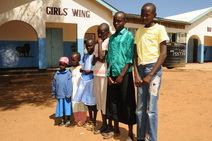 |
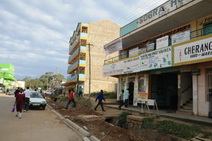 |
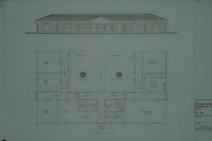 |
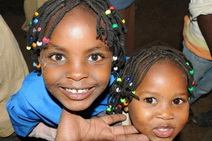 |
 |
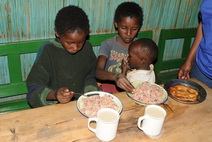 |
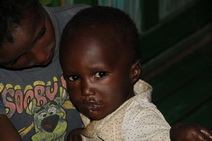 |
 |
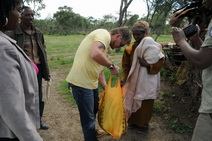 |
Nikon D5000
If Canon is number one on the SLR market, the two spot has been held firmly for some time by its long-time rival, Nikon. Said company also has a wide product range, starting with purely professional units, continuing to semi-pro SLRs and finally, the amateur models available to the general public. We will now introduce one product from the latter group – the Nikon D5000.
Regarding sensor size, Nikon offers two basic types within its product range: full frame professional SLRs with a cine-film frame sensor size (labeled FX) and SLRs with a smaller sized chip (23.6 x 15.8 mm), meaning the APS-C category, with Nikon using its own terminology – DX. In this case, the crop factor is 1.5x. At present, Nikon offers seven different SLRs, where only the lowest model, the D3000, uses the older CCD sensor. All of the others, including the reviewed Nikon D5000, make use of the CMOS type sensor.
 |
 |
The Nikon D5000 can be considered a relatively small SLR in classic black coating, with only a small touch of red in the grip area below the shutter. It is a small addition to the design typical of Nikon. Like other amateur SLRs, the body is plastic with a relatively bulky grip for the right hand on the front side and for a safer hold, there is a rubber area on the back side ‘under your thumb.’ Taking into consideration its small size, the ergonomy itself is quite excellent – even users with bigger hands will appreciate this camera – an area where Nikon certainly does not lose a single point for its reputation.
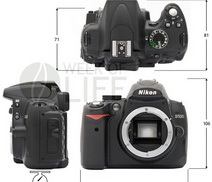 |
||||||||||||
|
||||||||||||
A typical indicator of an amateur SLR is the absence of a top mounted status display on the right side – here, the manufacturers usually place the circular regime select switch. Another ‘amateur’ characteristic is the presence of only a single Control Dial, on the top back side, for control purposes of the right hand thumb. Hence, on the top front side, you will only find the shutter with a circular ring for the on/off switch and two additional buttons: Info and a button with the ± symbol.
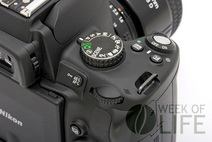 |
|||||
|
In context with the sole control dial, the ± button represents a very important control element – it switches between the different functions. For example, if you are taking photos in the shutter priority mode (mode A), you normally use the Dial to set the intensity. However, once you need to use exposure compensation, you press the ± button and make needed changes with the control dial. The same applies when using the manual mode, where you compensate for the exposure with the control ring as usual, but by pressing the ± button, you now control the shutter.
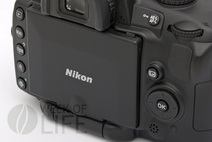 |
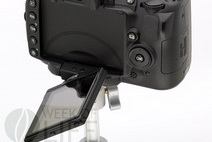 |
What really stands out, and only a handful of SLRs are equipped with, is the structural design of the LCD display – the flip-down–and-swivel attribute. In addition to other positions, it allows for turning the ‘backside up’, effectively ensuring safe transportation of the camera and its LCD display. However, while most D-SLRs are articulated on the left of the rear side, Nikon placed the D5000’s articulation at the bottom. There is no obstacle for ordinary usage, though a problem might arise once you attach the camera to a tripod to take a self-portrait.
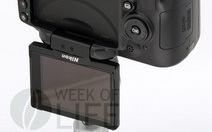 |
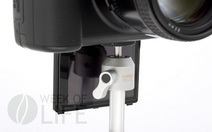 |
The top of the tripod prevents that kind of application of the camera and the LCD display. The more common use of the articulation on the left, in which the display rotates on the side of the camera, seems better and more practical. It is not only a matter of the inability to take self-portraits. The flip-down-and-swivel display, along with Live View, is also often used for visual control of the exposure compensation during product photography as well as studio photography in general.
Users of the Week of Life medium will have to settle for taking self-portraits by their own hand.
In that case, the LCD display is useful.
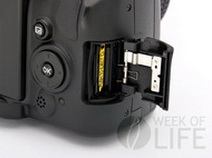 |
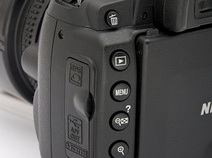 |
As it is the case with most amateur SLRs, The Nikon D5000 stores image data and videos on SD/SDHC memory cards. If you plan to film video sequences, we recommend using Class 6 and higher memory card types that are sufficient in speed for the large data inflow of HD video. Be prepared to lose automatic focusing in this mode and get ready for mono sound only. Under the connector cap, you can find an HDMI interface for a direct connection to your HD TV and instant playback of video sequences from the camera.
Certain limitations of this model arise in the scope of its exchangeable optics. The Nikon D5000 does not have an autofocus motor installed in its body. Therefore, when using older motor-less lenses, forget about automatic focusing. The camera will work; you’ll just have to focus manually. Lenses with their own motor, like Nikkor AF-S type optics and ones from ‘3rd party manufacturers’ (i.e. Sigma, Tamron), support autofocus without any problems.
Besides the obligatory JPEG, Nikon D5000 enables image data to be stored in wireless RAW format. In combination with company software Nikon Capture NX2, it is possible to gain an unmatched amount of information out of the RAW format and fix a bundle of image defects. When developing from the RAW format with the NX2 for instance, you can forget all about chromatic dispersion – the software perfectly and completely gets rid of it, without any kind of image quality degradation. The only flaw is the absence of this pricy software in the basic Nikon D5000 kit.
Screenshots of the menu of Nikon D5000
 |
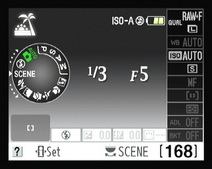 |
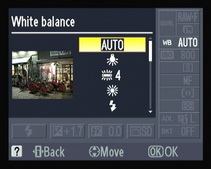 |
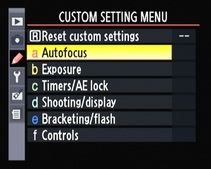 |
 |
 |
Overall evaluation
Even though we have pointed out a few limitations of this camera in this review, it is still an excellent product in its class, with a great price/efficiency ratio. There are several available kits for beginners; one of these, with a stabilized lens and basic zoom 18-55mm (after crop factor 1.5x, it is approx. 27-80mm), is sold for the agreeable amount of $652.66. If you are not already an owner of a compatible lens, buying the body and the lens separately will not be worth it.
Common Price (at the time of this review being published): $652.66
Basic Technical Data for Nikon D5000
Sensor
CMOS 23.6 × 15.8 mm (crop factor 1.5 ×)
12.2 Mpx (4,288 × 2,848 px)
Light sensitivity ISO 100 to 6,400
Shutter
Shutter speed 30–1/4,000 s
Flash X-sync 1/200 s
Burst buffer 4 fps
Optics
Exchangeable lenses of the Nikon F standard (automatic focusing only compatible with lenses having their own autofocus motor)
Autofocus
11-point
Live View
Yes, real time live view of the scene from the CMOS image sensor
Memory medium
SD/SDHC
Data formats
Image: JPEG, RAW (NEF)
Video: AVI
Video
1,280 × 720 px, 24 fps
640 × 424 px, 24 fps
320 × 316 px, 24 fps
Mono sound
LCD
Screen size 2.7” (68 mm)
230,000 px
Power supply
Li-Ion battery
Dimensions and weight (body only)
126 × 106 × 71 mm (w × h × d)
610 g (incl. battery and memory card)
 |
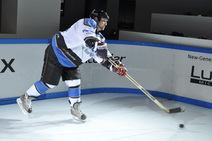 |
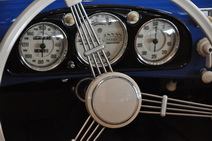 |
 |
 |
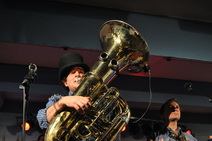 |
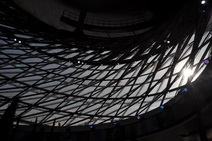 |
 |
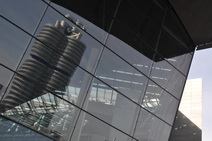 |
 |
 |
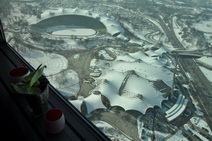 |
Reportáž Kenya 2010 – II. díl
Jiří Pergl, Podnikatel, Česká republika
Reportáž Kenya 2010 – díl první
15.1. Nanyuki
Ráno jsme dotřídili zbytek jídla do tašek a zjistili jsme, že nám ještě chybí rýže, fazole a zelené bobule s názvem Green Grams.
Asi jsme to v Karatině špatně spočítali, takže jsme odjeli do centra Nanyuki a dokoupili potřebné jídlo, aby měli všichni stejně. Mezitím, co kluci třídili jídlo, jsem se vydal s Hellen založit nový účet v bance s názvem Standard Chartered bank of Kenya na veškeré potřebné transakce, jakými jsou převody peněz od adoptivních rodičů do různých institucí (školy, lékař, nemocnice…) a také, aby to bylo vše v pořádku u keňské vlády, která na tyto transakce ráda dohlíží. Pro založení účtu společnosti OMDC je v Keni potřeba 5 lidí. Vybírat tyto peníze může jen naše právnička, já a Hellen. Ostatní ale musí být na účtu zapsáni včetně doložené fotografie, ofoceného ID dokladu o místu trvalého bydliště. Legrační na tom je, že banka vám žádnou kopii neudělá a vy musíte s každým papírem běžet přes ulici a nechat ho ofotit. Jenže tam je kopírka z roku raz dva a když to pak v bance nemůžou přečíst, tak si to ofotí sami na nové kopírce Minolta, která leží 2m od jejich pracovního stolu. Celkem jsme kvůli založení 1 účtu strávili v bance 5,5 hodiny. Žádná voda nebo kafe, nic vám nedají, neblázněte, jste v Keni. To, že vypisoval všechno ručně a lepil fotografie lepidýlkem jsem pochopil, ale to s těmi kopiemi všech dokladů potřebnými pro založení účtu mě opravdu dostalo.
Odpoledne jsme zajeli po telefonickém objednání k místnímu architektovi. Proč? Říkal jsem, že chci tady v Doldol postavit nový dětský domov a tak to také udělám. Architektovi jsem představil svojí myšlenku o domově pro 60 dětí včetně školy, kostela, kuchyně, společenské místnosti, ložnic, umýváren a plotu… Navrhl jsem mu komplex do tvaru U.
Řekl, že si bere 6% z celkové ceny díla. Maličko mi zatrnulo. Po dlouhém rozhovoru o tom, k čemu tento dům bude sloužit a že naše děti ve slumech umírají hlady se nad námi slitoval a řekl si cenu za kompletní projekt, ale bez dozoru na stavbě (jen kulatá razítka pro revize) 55 000 Kč. Ano, čtete dobře, řekl si třetinu ceny. Prý má také rád děti. Měli jsme štěstí
Na řadu přišla návštěva dětského domova v Nanyuki. Dovezl jsem jim mnoho bonbónů, lízátek a 20 DVD pohádek v angličtině. Jídlo jsme vynechali, protože jak jsem již psal, vláda se konečně začala o tento domov starat a děti netrpí hlady. Mimochodem, do domova přijali 2 nové holčičky, Brendu a Grace. Jsou to sestry. Jednu z nich přijali před 14 dny totálně zmlácenou do krve, s obličejem popáleným od nažhaveného nože. Snažím se je získat do naší adopce.
S dětmi jsme si zahráli pár her, zazpívali, udělali společné fotografie, rozdali sladkosti a už byl večer.
Do resortu za námi přišel novinář, který píše do Daily News Kenya a chtěl ode mne rozhovor. Slíbil mi, že udělá maximum, aby se o naší organizaci dozvědělo více lidí a hlavně firem ( Telefonica Safari com, banky jako např. Barcleys bank atd.) a mohli nám pomoci. Jinak jsem s novinářem hovořil o České republice a různých plánech zde v Keni, jak jsem se k tomu dostal atd. Pak přišel na řadu on a povídal o vyvražďování tamní vesnice, ne moc vzdálené od Doldol. Prý se nyní píše v celé o Keni o 10 uprchlých malých holčičkách, které jednak přežily to krveprolití a jednak utekly z nuceného manželství společně s kamarádkami. Prý běžely kolem 200km, z toho některé bez bot, bez jídla a vody přes území slonů, lvů a divoké zvěře Afriky směrem k Nanyuki. Před městem se jich ujala jistá organizace a umístila polovinu z nich do našeho známého domova v Nanyuki a druhou polovinu do dětského domova na okraji Nanyuki, který vlastní italská organizace. Je to prý smutný příběh a měli bychom s tím něco udělat, jelikož oba domovy mají kapacitu zaplněnou a déle jak 3-4 dny je tam nenechají. Společně s naší sociální pracovnicí jsme to vymysleli, ale o tom až dále.
PS – z LG servisu nám kvůli televizi nikdo nezavolal…
16.1. Nanyuki a slum v Likii
Tento den jsme odstartovali návštěvy oněch 23 adoptovaných dětí s jídlem a dárky. Jelikož jsme je naplánovali na víkend, bylo jisté, že děti nebudou ve škole a nalezneme je všechny. Tento den jsme dokázali navštívit 16 adoptovaných dětí. Pořídili jsme nové informace o dětech, spoustu fotografií a videa, jak drží v ruce dárky a fotografie, pěstounům nebo rodičům jsme darovali zakoupené jídlo a sepsali vše potřebné, co jednotlivé dítě bude potřebovat. Všechno bylo prakticky ve stejném duchu – školné, uniforma, taška do školy, knihy do školy, tužky a sešity, jídlo a nájemné, občas také postel, aby dítě nespalo spolu se třemi nebo čtyřmi sourozenci na jedné posteli. U těch, kteří jsou bohužel HIV pozitivní ještě navíc léky. Po návštěvě asi 9letého dítěte mě opět zamrazilo. Kolem auta se neustále shlukovalo mnoho dětí, které prosily o sladkosti nebo dárky. Pravidelně jsem jim rozdával bonbóny a lízátka, ale jedna asi tak 5letá holčička s batoletem na zádech a 4letou sestrou, kterou držela za druhou ruku mě prosila o jídlo. Cyrus se jí kiswahilsky zeptal, co se stalo. Prý jim zemřela máma a nikoho nemají. 3 dny už nejedly a spaly na ulici. Mě zatrnulo… Okamžitě jsem je naložil do auta a odvezl do místní „ slumové restaurace“. Objednal jsem jim jídlo – 2 druhy kaše, chleba a mléko pro batole. To, že batole hltalo mléko s chlebem jako o závod dokazovalo, že opravdu nelhaly. Ubrečené sedly ke stolu a při jídle se jim začaly objevovat úsměvy na tváři. Mě se jich zželelo a zaplatil jsem jim v té restauraci jídlo na 4 dny dopředu. Vrchní jsem upozornil, že si to přijdu zkontrolovat.
Večer utrmácení se už vracíme do resortu a jdeme brzo spát, jelikož druhý den nás ještě čekají 3 děti ze slumu v Likii a 15 rodin s dětmi, které jsou na tom opravdu špatně. V noci mě ale budila představa co bude dál s těmi 3 dětmi.
17.1. Nanyuki a Slum v Likii
Po ránu vyrážíme do slumu v Likii a jdeme navštívit ještě 3 adoptované děti. Rozdáme opět dárky, pořídíme záznam a informace. Jedno mi ale nesedí. Některé naše adoptované děti jsou HIV pozitivní od narození, jelikož se nakazily od své pozitivní matky. Nyní se pěstounů nebo ještě žijící matky ptáme, jak je na tom jejich dítě zdravotně a dozvídáme se, že je prý nový test negativní. Dítěti je třeba 5 nebo 6 let. Nesmysl. V organizaci OMDC máme také svého doktora a tak jsem to s ním probíral. Doktor mi řekl, že je pár ojedinělých případů, kdy dítě je po narození pozitivní a po 6 měsících se test ukáže jako negativní a to stále ještě není na 100%. Ale určitě ne po 5 letech. Musíme s naším doktorem udělat všem nové kvalitní testy. To už zařídí Hellen spolu s doktorem až já tu nebudu.
Dále pak Hellen vytáhla soupis dalších dětí. Opět samé smutné případy. Děti bez rodičů nebo jen s matkou, která má AIDS nebo mají ony sami AIDS od narození a tak dále. Nechodí do školy, nemají co jíst a postupně se z nich stávají děti ulice čichající lepidlo…
Jednotlivé případy jsem nafotil, předal jim tašku s jídlem a v Čechách je připravím k další adopci. V autě zbyla ještě jedna velká taška s plyšáky od školy Chvaletická. Takže opět jako minule byli rozdáni za úsměvu a velké radosti dětí. Škoda, že Patrik popletl na manuálním fotografickém přístroji světlost a skoro žádná fotka nevyšla. Snad video bude lepší.
Tak,…od rána myslím na to nejdůležitější. Jak rozlousknout současnou situaci oněch 3 dětí. V první řadě jsme se vydali je hledat. Když jsme je našli, měly radost, že mě vidí a hned bez protestů naskočily do auta. Zeptali jsme se jich kde doteď bydleli a tak mi ten kurník jely ukázat. Opět hlína, 2 rozpadlé postele, z toho jedna bez matrace, na které spaly. Žádné deky, prý se v noci hřejí navzájem. Ptáte se jak to, že je v Keni zima? Provincie Laikipie, respektive okolí hory Mount Kenya, se nachází v 2200 m.n.m. Já jsem v noci v resortu přikrytý 2 dekami a klepu kosu. Vysprchovat se po ránu je taky oříšek. Přes den se teplota vyšplhá na 30 °C, ale ta noc je opravdu obrazně „mrazivá“. Teplota se pohybuje kolem 8-12°C. Kuchyň, no…. oheň s hrncem před postelí a jedna lavice se 3 nohama. Toť vše. Každopádně to byl jejich domov, tak jsem sehnal jeho majitelku a zeptal se, jak je to s nájmem. Prý dluží za posledních půl roku. Opět jsem sáhl do vlastních rezerv a vyrovnal dluh. Dále jsem zaplatil nájem na 6 měsíců dopředu, než se sem opět vrátím. Nechal jsem jim tam 2 tašky jídla (60kg) a poprosil sousedku, aby jim z toho vařila. Asi si z toho něco nechá, tomu nezabráním, ale hodně důrazně jsem jí oznámil, že bych byl rád, kdyby to jídlo bylo pouze pro děti. Pak jsem jim rozdal spoustu sladkostí a také nějaké oblečení, které jsem dovezl z Čech, včetně oblečení pro batole. Dobrá práce,… nyní už s úsměvem odjíždíme ze slumu v Likii zpět do resortu a mě těší, že to tak dopadlo…
18.1. Cesta do Doldol
Ráno odjíždíme směr Doldol, kde nás čeká to nejdůležitější. Za prvé návštěva tzv. městského úřadu v Doldol kvůli pozemku na stavbu našeho nového dětského domova a za druhé návštěva posledních 3 adoptovaných masajských dívek. Po překonání úmorné cesty bez asfaltu, kde byste opravdu bez zvýšeného auta 4×4 neměli šanci dojet bez nějakého problému, se vydáváme s oficiální žádostí o pozemek zdarma pro náš dětský domov za starostou města Doldol. Jenže ouha, starosta byl za těch půl roku vyměněn a nový o ničem neví. Jsme prostě v Keni a dokud to není na papíře, je lepší ničemu nevěřit. Další zkušenost. Každopádně jsme mu přednesli náš plán, seznámili ho s naší organizací a on byl nadšen. Z jeho strany to určitě nebude problém, ale musíme organizaci zaregistrovat ještě v provincii Laikipia nord. Naše OMDC je zaregistrována pod provincií Laikipia east, takže pokud chceme ještě působit u nich na severu, je zapotřebí druhá registrace.
Také jsem se dozvěděl, že Doldol má 2 DC, tj. městské úřady. Opět rozdělené na světové strany. Takže jsme společně se starostou západu putovali za starostou východu 🙂 Tam jsme mu opět přednesli vše o naší organizaci, co všechno děláme a co máme v plánu u nich postavit. Zpočátku jsem nevěděl, s kým mám tu čest. Tykal jsem si s ním, vyprávěl mu o České republice, samá legrace, jakou mám firmu a že z výdělku mé firmy chci postavit tento nový dětský domov a tak dále. Pak začal mluvit on o historii Masajů, jak má rád děti a že s naší organizací naprosto souhlasí a nemá vůbec žádnou námitku proti darování pozemku.
Ukázal mi svojí novou stavbu, která se akorát dokončovala. Nasary school, tzv. začínající školu nebo spíše školku až po školu pro děti do 6. třídy. K tomu postavil další 3 budovy rozdělené na holky, kluky a jídelnu s kuchyní. Děti v tomto komplexu přes týden spí, jenže je to byznys. Každé dítě musí zaplatit školné a ubytovnu, takže jsem se bál zbytečně, že by naše veškeré úsilí přišlo vniveč, jelikož už by v Doldol taková instituce byla. Dětský domov se školou prý oblast Laikipe nord potřebuje jako sůl. Takže po projednání na radě města by neměl být problém s darováním pozemku, ale až po zaregistrování i u nich. Hellen tu čeká mnoho práce po dobu co tu nebudu.
Každopádně s úsměvem na rtech odjíždíme z města za 3 adoptovanými dětmi. Cestou mi Patrik s Cyrusem vypráví, jak je skvělé, že jsem se potkal právě s tímto pánem. Říkám si, no co? Starosta jako „každej jinej“. Jenže celou dobu se s ním kluci stále chtěli fotit, tak už to mi přišlo divný. Zeptám se, a kdo je ten starosta? Prý jeden z nejvlivnějších lidí v Keni. Je to mluvčí samotného prezidenta Keni a zastává 3. největší funkci keňské vlády, která je i nad ministry. Prý je každou chvíli v televizi a v novinách. Docela mne to omráčilo. To je velký úspěch představit naše OMDC přímo u vlády Keni. Tenhle zážitek si budu dlouho pamatovat. Každopádně už vím, proč se postavil další městský úřad na východě 🙂
To už přijíždíme do školy na okraji města Doldol, kde máme mít 3 masajské dívky, které máme v adopci. Opět změna. Místo té ředitelky, které jsme předali peníze za školné pro ony 2 dívenky v srpnu minulého roku, tu byl ředitel. Naši organizaci nezná a ve škole se nachází už jen jedna holčička – Soina Lekinait. Zbylé dvě ( Nais Lowari a Nolari Moiyale ) prý vyhodili, protože neměly knihy. Mimochodem to, co se stalo dál s Nais, jsme zjistili až posléze. Řediteli školy jsme oznámili, že budeme platit školné pro Soinu, Nais a Nolari a hned zítra ty dvě musí vzít okamžitě zpět do školy. Soině jsme předali dárky, udělali fotografie a jeli hledat Nais. Mimochodem Soině narostly krásné černé vlasy a hlavně rovné, což zde není moc časté. Moc jí to slušelo.
Abychom našli Nais, musela nám pomoci místní učitelka. Jeli jsme asi 20km do pustiny mezi slony a lvy takovou cestou, že občas i 4×4 mělo problémy a najednou se objevila malinká pevnost z pichlavých kaktusů s ostny dlouhými až 6cm a tak ostrými, že mi propíchly i moje sportovní Salomony. Než jsem stačil najít vchod, měl jsem 3 zabodnuté ostny v noze. Skuhral jsem, jak to bolí, že mi zůstaly špičky pod kůží a učitelka mi řekla, že děti tady chodí bosy a mnohokrát se stane, že si na kaktus šlápnou bosou nohou a vyndávají jim i 20 ostnů. Dítě si pobrečí a jde si hrát dál. No a my zhýčkaní Evropané hned brečíme, jestli to není jedovaté a zda nemám jít k doktorovi. Zaťal jsem tedy zuby a tu úpornou bolest vydržel. Mimochodem Masajové nikdy v životě nebyli u doktora. S ničím. To znamená, že ani u porodu. Proto je tak složité u nich zjistit přesné datum narození. Ví se kolik je jim let, ale to je tak vše. Musel jsem se smát, když mi máma Nais řekla, že se narodila v pátek, ale neví, jaký rok. To už přicházíme k masajskému domku postavenému z výtrusů domácích zvířat, dřeva a trávy. Venku sedí Nais a v ruce drží asi měsíční batole. Jenže já tu byl v létě a to nebyla ve škole? Ne, byla těhotná. Učitelka se zeptala matky Nais. Prý ji na jaře prodali do manželství jednomu Masajovi za 2 krávy, jelikož neměli co jíst. Ach jo.. .Masajové. Předali jsme Nais dárky a jídlo a oznámili jí, že by bylo dobré, kdyby nastoupila zpět do školy. Nais umí výborně 3 jazyky a je velmi nadaná. Domluvili jsme s její matkou, že se postará o batole a Nais se vrátí hned zítra do školy. Udělali jsme zde dobrou práci, ze které jsem měl velkou radost. Cestu zpět k autu mi už ukázaly místní děti, aby mi nepřibyly další ostny v noze. To už míříme za třetí holčičkou, která opět nechodí do školy. Předali jsme jí dárky, jídlo a ihned slíbila paní učitelce, že od zítra ráda nastoupí do školy v Doldol. To už se stmívalo a my museli odjet za doprovodu zvuků místní divočiny do Nanyuki.
 |
 |
 |
 |
 |
 |
 |
 |
 |
The world of the magic box
When the Week of Life was in its infant phase, we, in the editor’s office, noticed a photographic phenomenon lurking amongst the photos of the authors from around the world. It was more of a sociological phenomenon, perhaps pointing out the future investigative and scientific character of the whole project. What are we talking about? With a few exceptions, everyone who submitted one or two sets into the project, he or she included a photo lying down in front of the strong ‘magnetic box’ called TELEVISION, with own feet usually belonging to the resulting image. Resting, relaxing or just laying on the sofa watching TV has become a worldwide phenomenon. We can see here how powerful the grasp of this medium is and how we’ve become its loyal brothers and sisters. From the photos themselves, we can even easily sense the intensity that goes on during this kind of ‘action’. At times, it is electrifying as telephone wires. Other times, it can be as chilly as the spring frost. At this point, we are not here to judge, assess or evaluate; that belongs to the Author’s column section, soon to expand by another scholarly perspective. As for our concluding remark, hardly any other activity is as resembling across the continents as hanging around the TV is. Welcome to the world of the Magic box.
Jan Watzek, Student, Czech Republic
Alena Šustrová, Office worker, Czech Republic
Tomáš Fibír, Civil engineer, Czech Republic
Zdeněk Dvořák, Special education needs teacher, Czech Republic
Milan Rejholec, Student, Czech Republic
Robert Thiele, Photographer, Germany
Jan Maťátko, Bartender, Czech Republic
František Ortmann, Photographer, Czech Republic
Antonín Blažek, Student, Czech Republic
Veronika Bahnová, Retired, Czech Republic
František Zíka, Skateboarder, Czech Republic
Vlad Gerasimov, Illustrator, Russia
Stanislav Pokorný, Photographer, Czech Republic
Adolf Zika, Photographer, Czech Republic
Hana Růžičková, Photographer, Czech Republic
Rick Minnich, Film director, Germany
Jan Watzek, Student, Czech Republic
Pasi Heiskanen, Web designer, Finland
Jiří Šebek, Web designer, Czech Republic
Věra Kurcová, Businessperson, Czech Republic
Petr Hrubý, Engineer, Czech Republic
Zdeněk Dvořák, Special education needs teacher, Czech Republic
Gianna Combs, Manager, Croatia
Vladimir Brunton, Photographer, Czech Republic
Marcel Fujcik, Photographer, Czech Republic
Milan Rejholec, Student, Czech Republic
Rick Minnich, Film director, Germany
Martina Štolbová, Teacher, Czech Republic
Karel Vaněk, Technician, Czech Republic
Michal Havránek, Computer programmer, Czech Republic
Johannes Frank, Graphic, Iceland
Martina Kaderková, Foundation director, Czech Republic
Jiří Hrdlička, Technician, Czech Republic
Jan Watzek, Student, Czech Republic
Jan Lankaš, Journalist, Czech Republic
Josef Dohnal, Student, Czech Republic
Michael Agel, Photographer, Germany
Janina Fröhlichová, Parental leave, Czech Republic
Lubomír Budný, Student, Czech Republic
Lucas Di Tiero, Analyst, Argentina
Zdeněk Dvořák, Special education needs teacher, Czech Republic
Stanislava Tomášková, Physiotherapist, Czech Republic
František Ortmann, Photographer, Czech Republic
Pasi Heiskanen, Web designer, Finland
Lubomír Kotek, Photographer, Czech Republic
Petr Hrubý, Ingineer, Czech Republic
Rick Minnich, Film director, Germany
Svět magické skřínky aneb zevlování u TV
Když byl Week of Life v úplných začátcích, všímali jsme si v redakci jednoho fotografického jevu na fotografiích autorů z celého světa. Byl to vlastně už jakýsi sociologický jev, který možná průkopnicky poukazoval na budoucí výzkumný charakter celého projektu. O co se jednalo? Skoro každý, kdo někdy dal do projektu více jak jeden dva sety, tak má ve své sadě fotografií nějaký snímek, kde se večer povaluje u silně „magnetizující krabičky či krabice“ zvané TELEVIZE a přes svá chodidla komponuje výsledný obraz. Odpočívání, relaxování či jen povalování na gauči u televize je fenomén celosvětový. Vidíme zde, jak mocně nás toto médium uchopilo a jak jsme se mu stali oddaným bratrem či sestrou. Z fotografií lze pak velice krásně vysledovat i napětí, jenž na nás při této činnosti doléhá. Někdy je vysoké jak telefonní dráty, někdy nízké jak jarní mrazíky (jarní nebo podzimní? : ). Nám ale na tomto místě a v této chvíli nepřísluší posuzovat a hodnotit, od toho je rubrika autorských textů, která se jistě brzy dočká dalšího vědeckého pohledu. Nám zbývá pouze konstatovat, že málokterá lidská činnost si je tak podobná napříč světadíly jako právě zevlování u televize. Vítejte ve světě magické skřínky.

Jan Watzek, Student, Česká republika
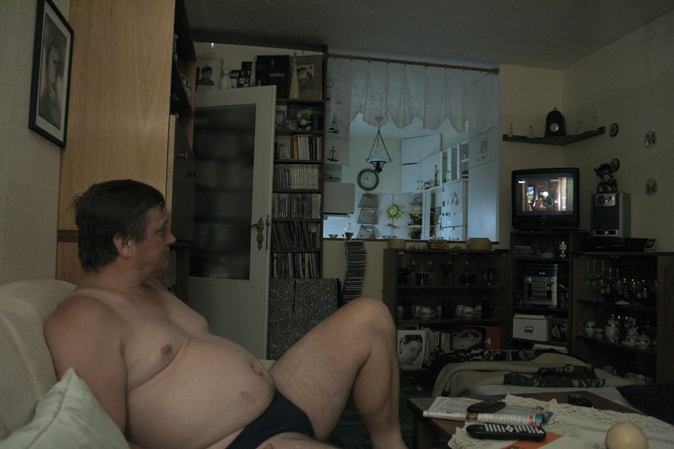
Alena Šustrová, Administrativní pracovník, Česká republika
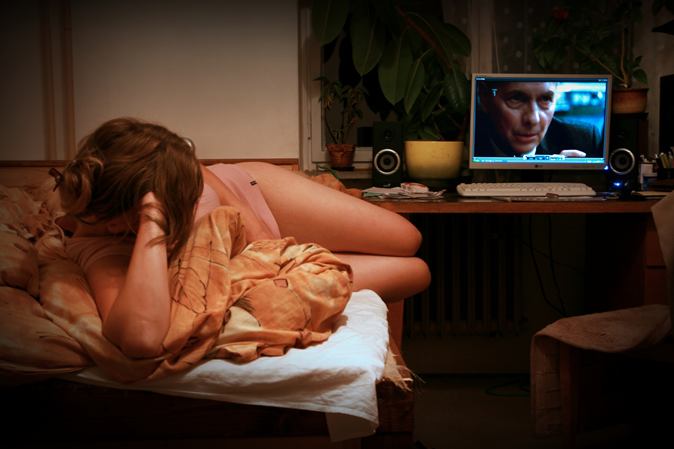
Tomáš Fibír, Stavební inženýr, Česká republika
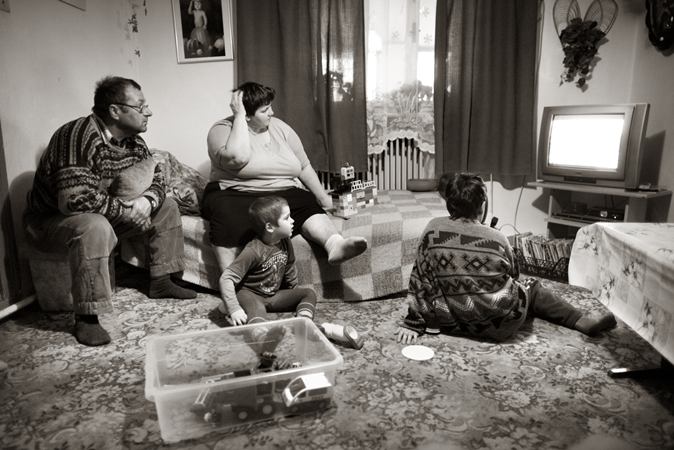
Zdeněk Dvořák, Speciální pedagog, Česká republika
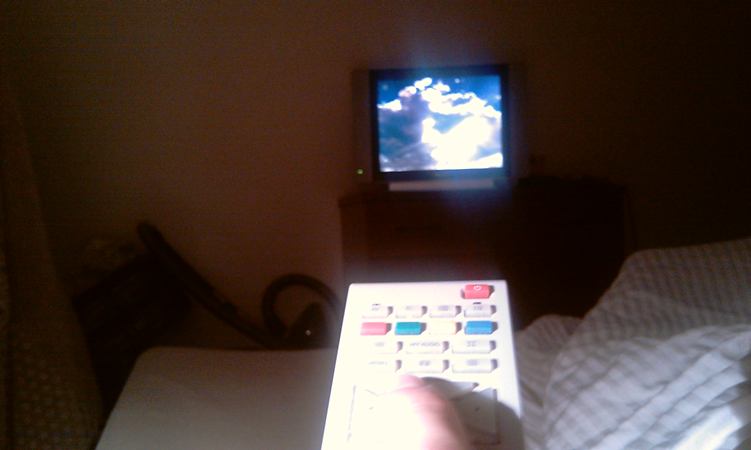
Milan Rejholec, Student, Česká republika

Robert Thiele, Fotograf, Německo
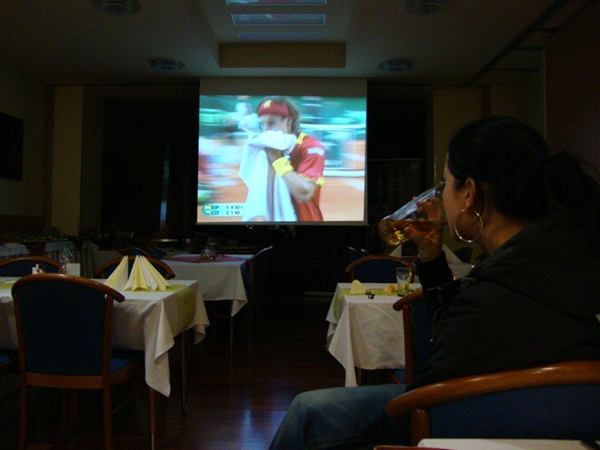
František Ortmann, Fotograf, Česká republika

Antonín Blažek, Student, Česká republika
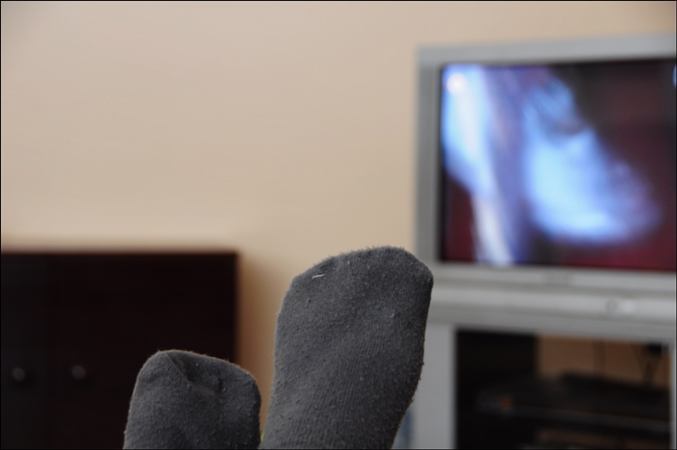
Veronika Bahnová, Důchodce, Česká republika

František Zíka, Skateboardista, Česká republika
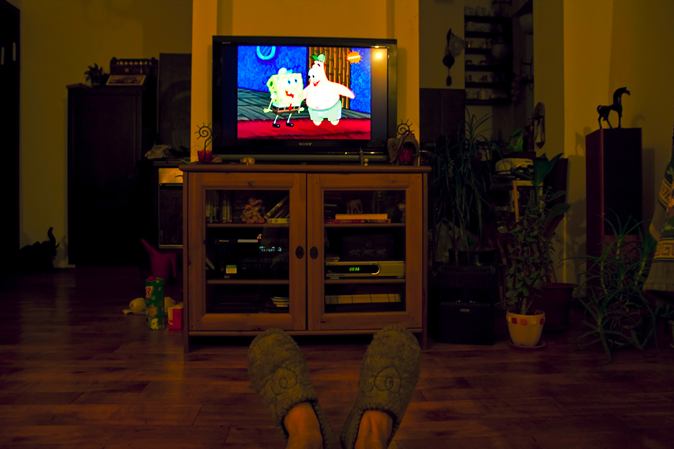
Vlad Gerasimov, Ilustrátor, Rusko

Stanislav Pokorný, Fotograf, Česká republika

Adolf Zika, Fotograf, Česká republika

Hana Růžičková, Fotograf, Česká republika

Rick Minnich, Filmový režisér, Německo
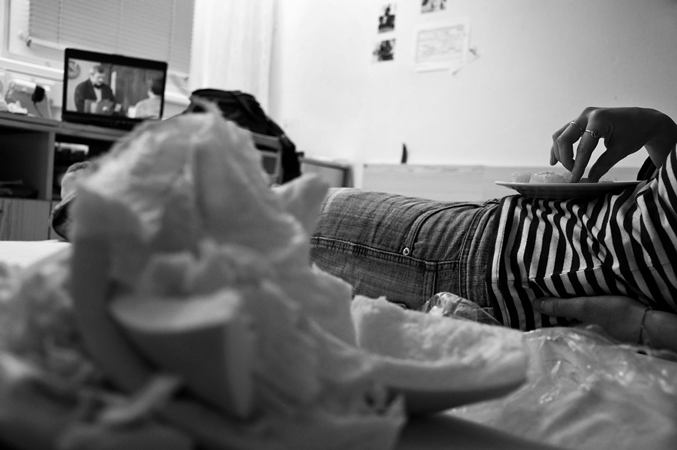
Jan Watzek, Student, Česká republika

Pasi Heiskanen, Web designer, Finsko
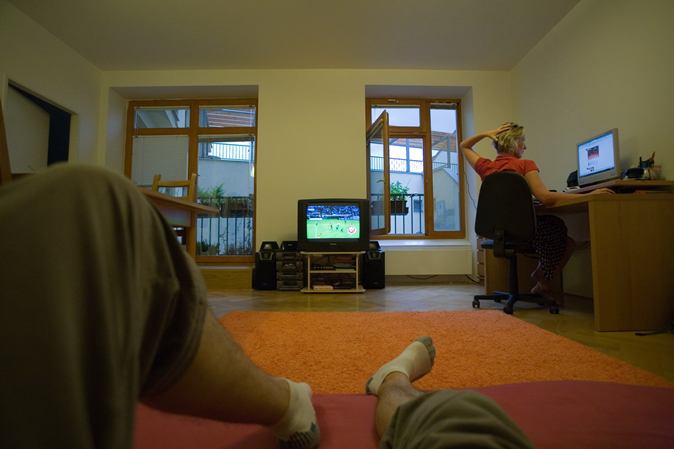
Jiří Šebek, Web designer, Česká republika
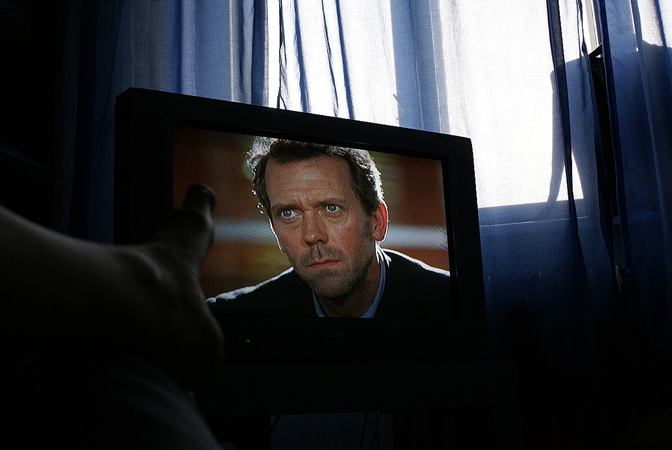
Věra Kurcová, Obchodník, Česká republika
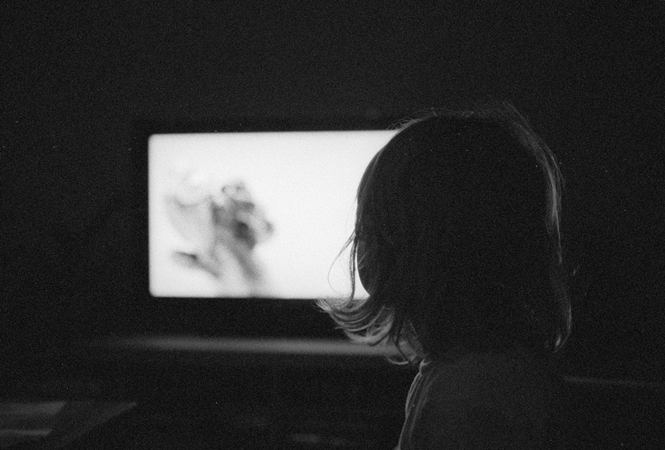
Petr Hrubý , Inženýr, Česká republika
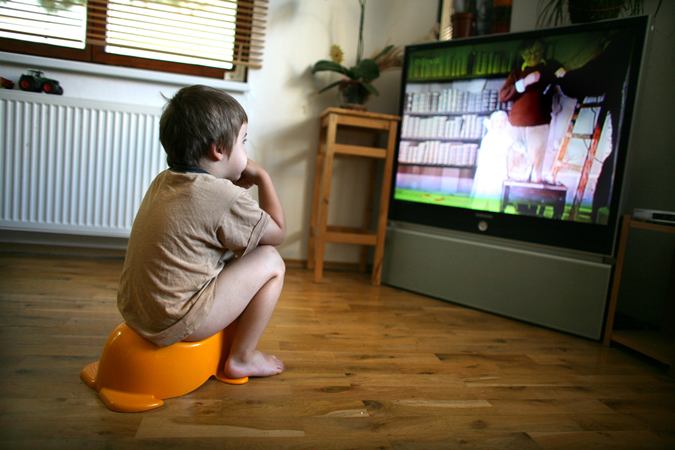
Zdeněk Dvořák, Speciální pedagog, Česká republika
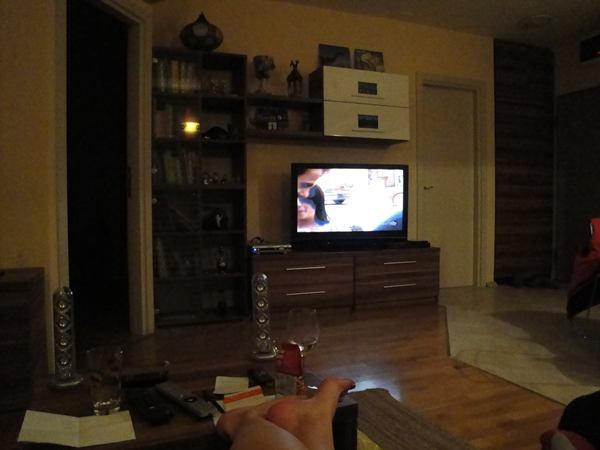
Gianna Combs, Manažer, Chorvatsko
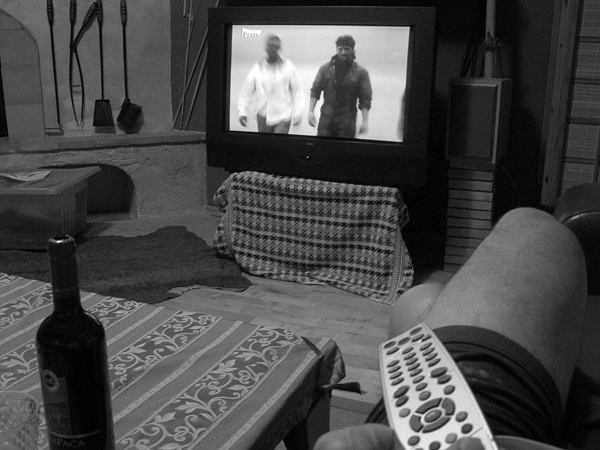
Vladimir Brunton, Fotograf, Česká republika
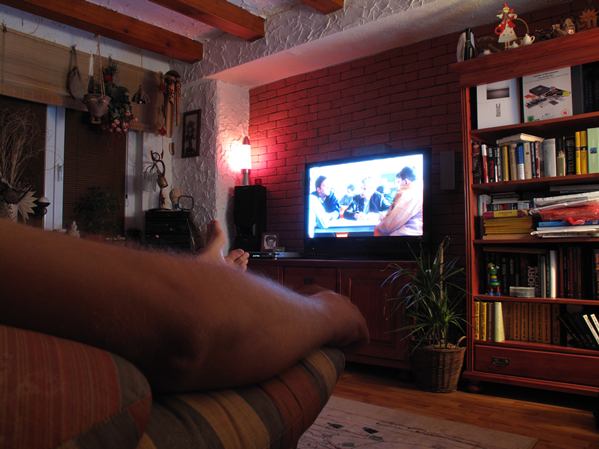
Marcel Fujcik, Fotograf, Česká republika

Milan Rejholec, Student, Česká republika

Rick Minnich, Filmový režisér, Německo
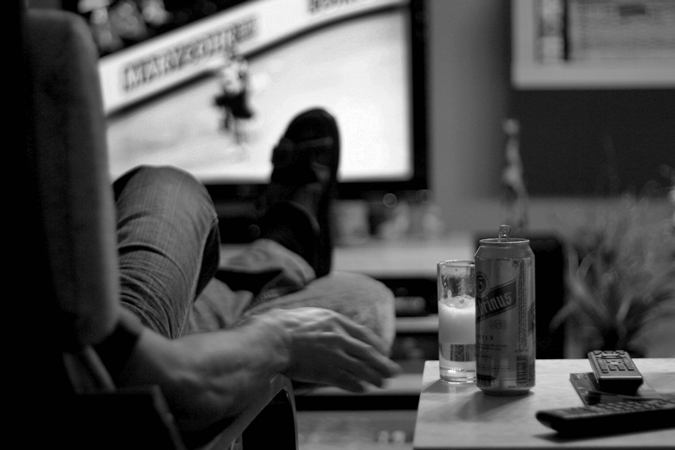
Martina Štolbová, Učitel, Česká republika

Karel Vaněk, Technik, Česká republika

Michal Havránek, Programátor, Česká republika

Johannes Frank, Grafik, Island
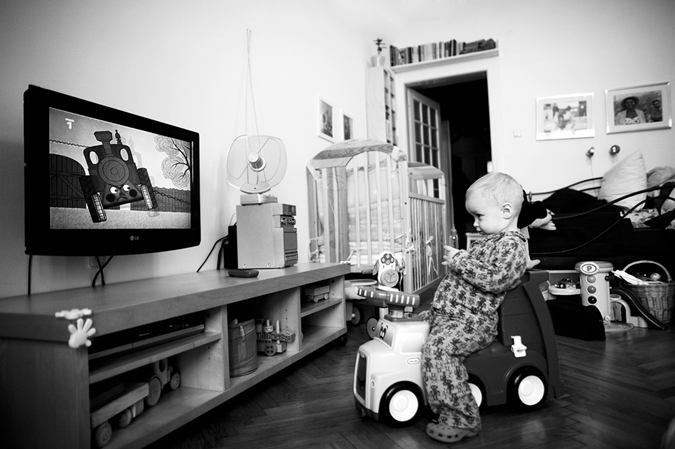
Martina Kaderková, Ředitel/ka nadace, Česká republika
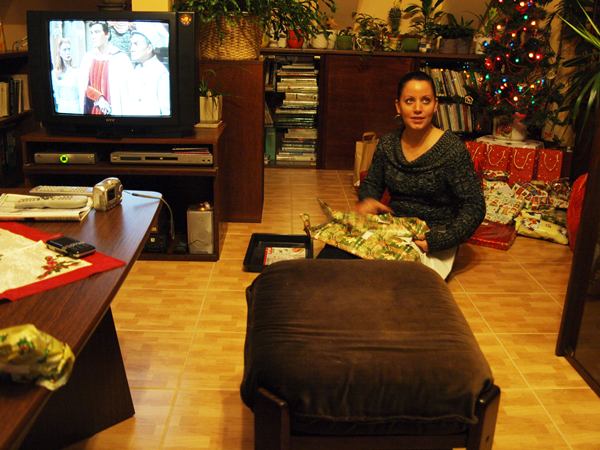
Jiří Hrdlička, Technik, Česká republika

Jan Watzek, Student, Česká republika
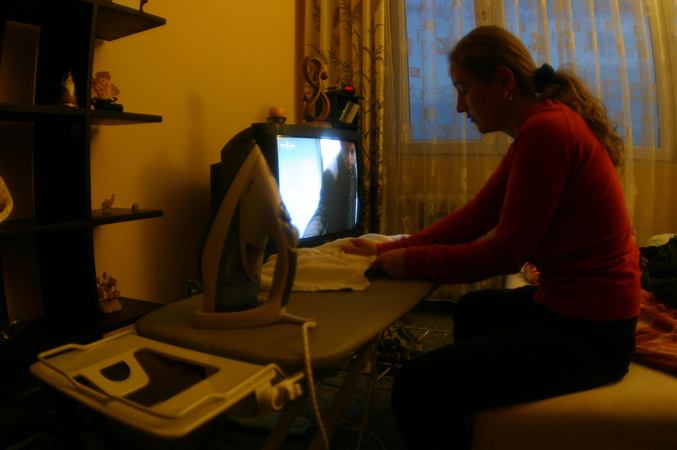
Jan Lankaš, Novinář, Česká republika
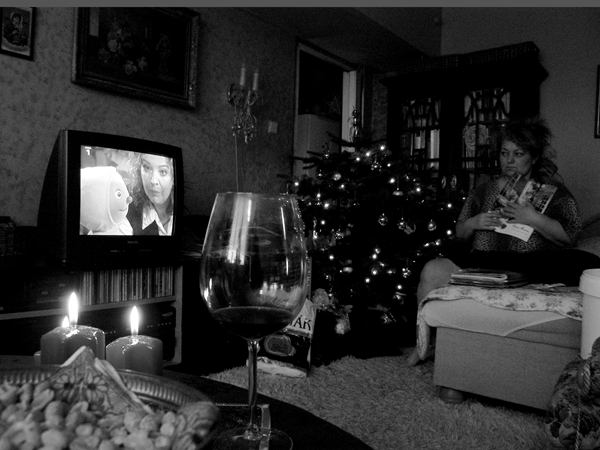
Josef Dohnal, Student, Česká republika
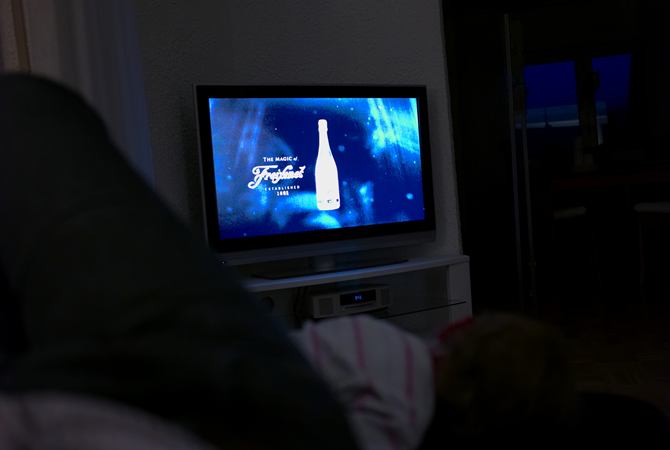
Michael Agel, Fotograf, Německo
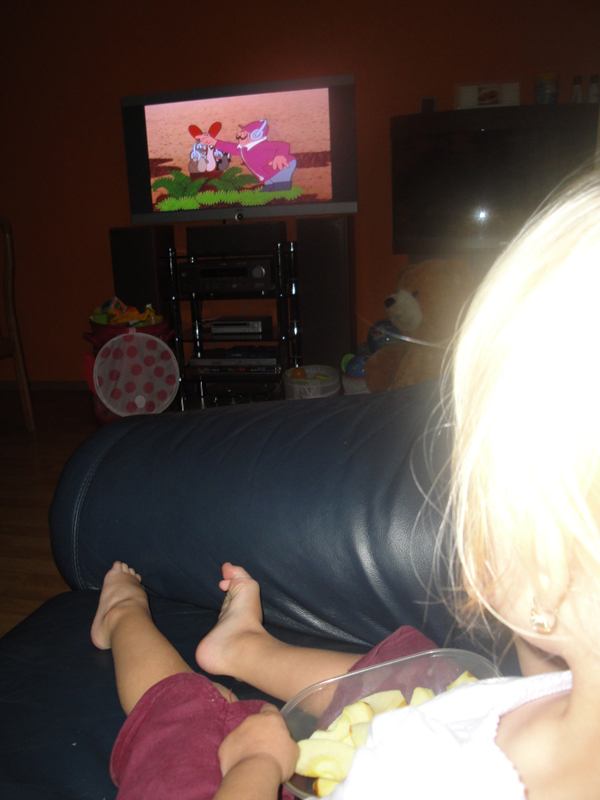
Janina Fröhlichová, Mateřská dovolená, Česká republika

Lubomír Budný, Student, Česká republika
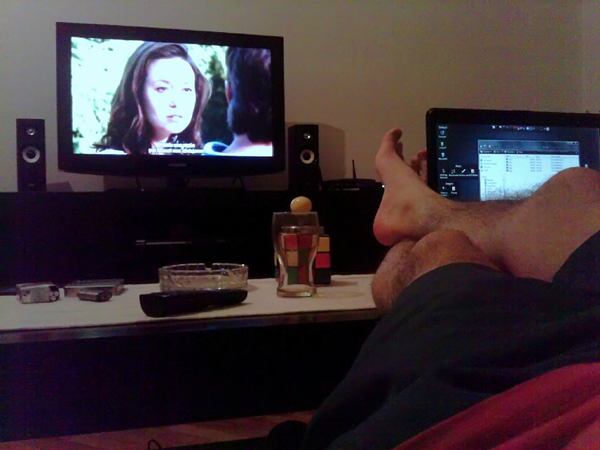
Lucas Di Tiero, Analytik, Argentína

Zdeněk Dvořák, Speciální pedagog, Česká republika
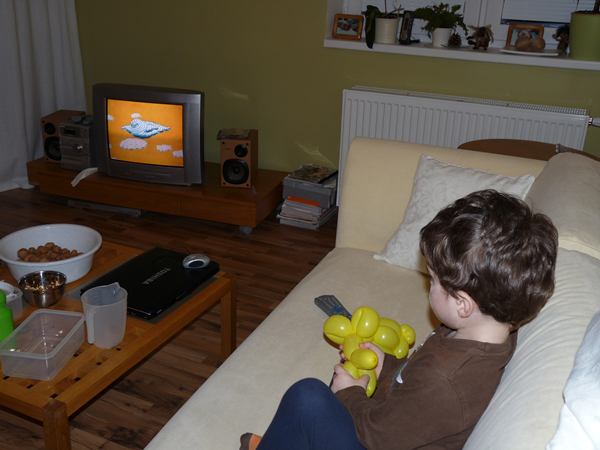
Stanislava Tomášková, Fyzioterapeut, Česká republika

František Ortmann, Fotograf, Česká republika
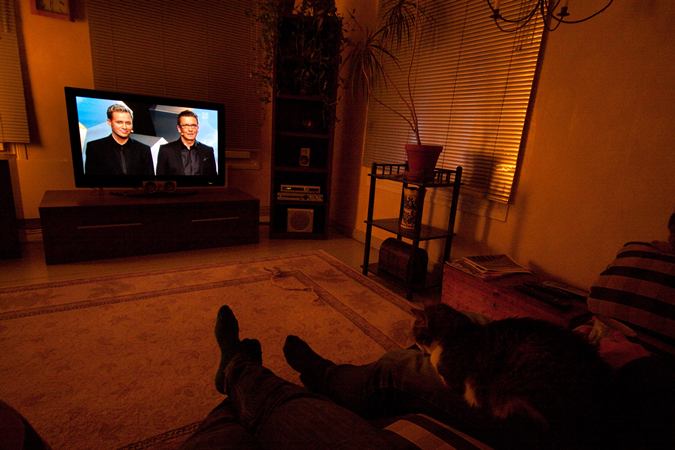
Pasi Heiskanen, Web designer, Finsko
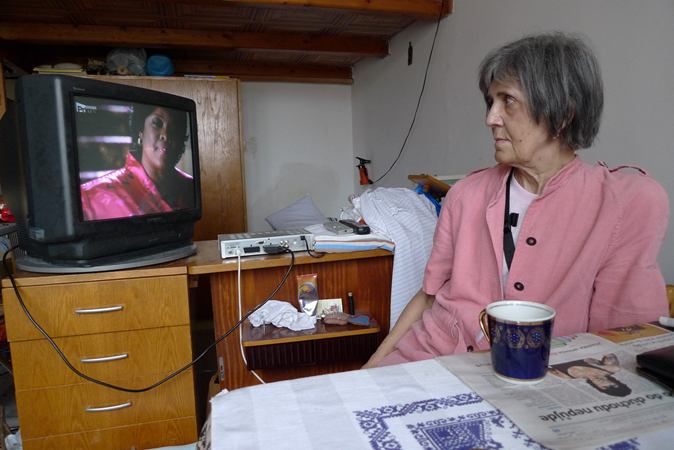
Lubomír Kotek, Fotograf, Česká republika
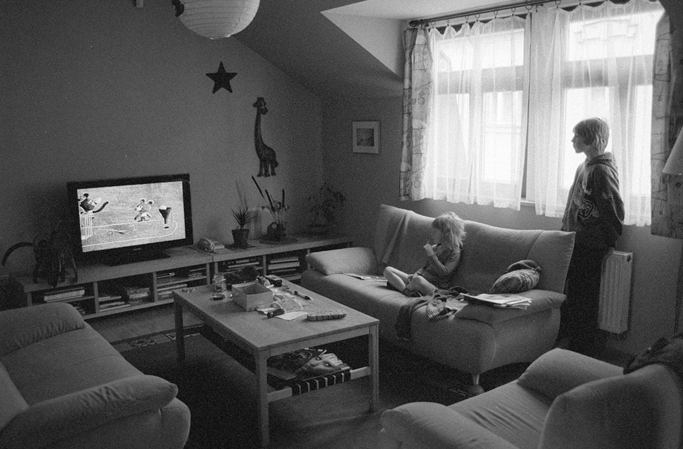
Petr Hrubý, Inženýr, Česká republika
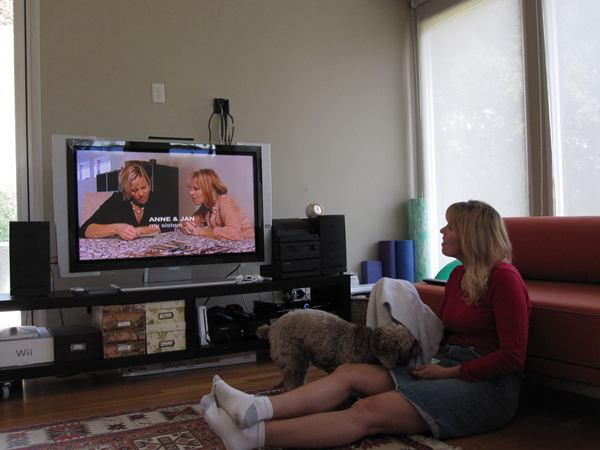
Rick Minnich, Filmový režisér, Německo
Fotografování krajiny – Sníh 1
Použití korekce vyvážení bílé
Někdy při fotografování zasněžené scenérie nevystihuje výsledný snímek mrazivou atmosféru sněhu. Snímek, na kterém sníh není čistě bílý, ale má namodralý nádech, může zesílit pocit intenzívního chladu. Pro navození pocitu mrazivého chladu nastavte Vyvážení bílé.
Použití korekce WB k vyjádření chladu
V případě fotoaparátů vybavených funkcí Korekce vyvážení bílé můžete vyvážení bílé posunout směrem k modré barvě a posílit modré tóny obrazu. I v případě, že váš fotoaparát není vybaven funkcí Korekce vyvážení bílé, lze podobného efektu docílit nastavením vyvážení bílé na Žárovkové osvětlení.
Obvykle je cílem Vyvážení bílé dosáhnout korektního podání barev na snímku. Někdy je ale lepší zdůraznit určité barvy tak, abychom docílili požadovaného vzhledu nebo dojmu. Snímky zasněžených scenérií budou mít silnější atmosféru, pokud posílíte modré tóny posunutím Korekce vyvážení bílé směrem k MODRÉ. Ne všechny modely fotoaparátů jsou vybaveny touto funkcí.
Porovnání efektu jemného nastavení pomocí Korekce vyvážení bílé
 |
 |
 |
 |
 |
Report Kenya 2010 – 1st part
Jiří Pergl, Enterpreneur, Czech Republic
Within the scope of his One More Day For Children organization, Jiří Pergl has traveled to Kenya for his second time and through the means of his report, you have the perfect opportunity to observe how successful he is in helping local children infected with AIDS.
Few people understand why it is so important to help children in Kenya. Why not Somalia, Chad, Kongo, Zaire, or Ethiopia? I will give you a simple answer. In 2007 extensive fighting between the tribal groups of Kikuyu and Luo took place because of the presidential election. Many people died. There was practically no TV coverage of this here in Czech Republic, only a brief piece with an inaccurate data. CNN talked about 50 thousand people who were killed during the unrest. Locals claim that the number is many times higher. As a result, a lot of children became orphans, unless of course, they were killed. Nobody is able to say how many people lost their livelihood during this period. Thousands of cases are undocumented. Murdered families in villages, burned down houses and churches, raped women and so forth abound. Locals claim that there are more than 200 thousand dead as of 2010, and they are still counting. Let us return to current state of affairs which is not all that different from 2007. September 2009 – in the region of Doldol where most of my activities take place. No TV has ever broadcasted what happened there. Only the locals know, and nobody has any desire to deal with it. People from one village set out to massacre a neighboring settlement. Over 100 brutally murdered only because no rain had come for fifteen years, and they had no food. The killers murdered their neighbors with automatic weapons so they could take their livestock and feed their own children. Were remaining children from slaughtered village (mainly girls between the ages of four to twelve) immediately forcibly married to wealthy men from a nearby settlement, circumcised, and sexually abused? OF COURSE! Damn…! This is terrible…. But this is not all! They were sold by survivors from their own village to get back their cows and sheep. So a four-year-old girl was married to 30-year-old man in return for 10 cows!!! What about little boys that survived? They ran for the bush, to the jungle where animals roam. Trying to survive among lions and monkeys in the wilderness. Many of them were devoured by lion packs, some were found half-eaten by monkeys. Oh yes, with faces nibbled off by baboons… I want to help the remaining children, all of them. By the way, one of the girls in our adoption program, Soina Leiknait, is a survivor from the village. I am not telling you all this to scare you off of a possible visit to Kenya, however there are a number of people who are telling me, “I have been to Kenya and it’s all right there.” They forgot to add that it was with a travel agency in some national park accompanied by a guide. And when they went alone, they would go to areas where wild animals live in peace and everything is fine. I understand that going to those God-forgotten places like Doldol (and further North towards Somalia) is rather uninteresting for them but… We are talking about something entirely different here. To make a long story short, after six months I returned to Kenya to help the sick, abused, hungry, and abandoned children. There is already a specific project in place. Our plan is to register, with the local authorities, 23 children that are included in our program of adoption, establish a bank account with Standard Chartered bank, set up a furnished office in Nanyuki, and fill out all the forms pertaining to the children. I am also going to pay a visit to an architect to get the full drawings needed for the erection of a brand new children’s home, including a school for 60 kids. Furthermore, I am going to visit those 23 kids and give them presents from their adoptive parents in the Czech Republic and gather some information regarding the use of our new account needed for future payments for school expenses, electricity, and rent. I will also deliver food supplies from the nearest large cities of Karatina and Nanyuki. Not to forget a children’s home in Nanyuki where sweets and DVD films are eagerly expected. Why not more stuff? Because they no longer need so much. We managed to spur the local government into action and they are supplying them with more money to purchase food and other life necessities. Out activities at this place are gradually decreasing but we have already adopted 3 kids there and plan further to adopt 3 more. From the money collected we also want to purchase food for another 15 struggling families with children. A visit to those 12 children from our last reportage is coming up as well, they survive without parents in a single derelict shack. Then we made a stop at the office of Doldol mayor and placed an official request for a donation of a piece of land that will be used to build our children’s home. A visit to the local people of influence who can lend a hand is a must, and we must not forget to contact Kenya’s newspaper.
12.1 Arriving in Nairobi
This is about the events that awaited me on my trip. My report documents how it all actually went.
The trip to Kenya is quite difficult unless you are willing to pay an exorbitant price and fly directly from Prague. A visit to a couple of German providers, however, will score tickets for some €500. The departure is from Munich with the flight being via Istanbul with seven hours of waiting between flights.
The scheduled arrival of this flight to Nairobi is always in the early morning hours (2AM). Waiting for me were Partick and Cyrus, our old friends from the previous reportage, who are assisting me here with the foundation. After a short nap comes the visit to Dr. Martin, who helps pregnant women who are HIV positive. We brought various medications from the Czech Republic, medication that people who contribute to our fund donated. Martin was astonished but regrettably his mother died the very same day so his pleasure was lessened to say the least. He informed me of a shocking fact – the number of HIV-positive mothers has been increasing at a rate of 50 a month, an increase of 300, from 1537 to 1837… Horrible. He also told me that 50% of young people in Nairobi are HIV-positive, an unbelievable number.
In the evening we had a meeting with Hellen and our lawyer, Elizabeth Njorge. It happened at the restaurant of my favorite hotel—Central Park. We had to discuss our program and set up meetings for the next day. After that, just sleep, so badly needed…
13.1. Nairobi
A visit to the LG service center awaits me the first thing in the morning. Why? A TV set we bought for the children in Nanyuki had broken down after only two months. Warranty? Here? Don’t be silly! They will not replace the set. Cyrus took the TV to a service center in Nairobi. That was at the beginning of October. The part needed should have come from Dubai. Now it is January and our TV is still idling in the service center. So I got upset again and had to be insistent. They will call Friday the 15th, so they told me. The TV should be repaired by then so we shall see. Off we go to setting up our administration, buying various folders, office supplies and then getting behind the desk and starting work. Our lawyer familiarized me with the regulations I need to know to get the process of adoption going and everything else necessary to making the Kenyan government happy and ensuring no problems come our way. Dead-tired we finish at 8 o’clock and go to sleep. In the morning we head for Nanyuki province where our organization operates.
14.1. Leaving for Nanyuki
It’s 8 in the morning and we are heading for Nanyuki. There is an important ahead stop in the town of Karatina. The biggest food market happens to be there, one claimed to be the cheapest. We needed to buy food for twenty-three adopted kids with money collected from OMDC to purchase food for fifteen families from the slums of Mount Kenya province.
I have no idea how we did it but we fitted the 1,140 kg of food and all the suitcases into our rented Toyota Prado. The one of the things that differentiates us from big foundations is that I use the money people donated only directly on the children themselves. I don’t use it to cover all the costs like flight tickets, car rental, gas, hired help and their food, my food. When it comes to adopted children, the situation is such that the government keeps 20% of the monthly payment (money you send them monthly); it is used for taxes and other expenses. Expenses mean everyday, ordinary care for the children – buying food, doctor’s visits, accommodation, necessary transportation, bringing needed school supplies (school bags, other supplies, and even beds for some). There is a cost to all of this of course.
After loading the food, we leave for Nanyuki. I plan to stop at Patrick’s village. Why? I want to visit the family of that 18-year-old boy from our first Kenya video who hanged himself (if you haven’t see the first film and so far have nothing to do with our foundation, you can visit my page www.expedice-world.cz where I visit various God forsaken corners of this planet. It is about nature and people, with beautiful scenery from Kenya all accompanied by wonderful music). The unfortunate boy committed suicide and the story leading to it is hard to believe. Upon our first visit to the village we set up an innocent competition among the local youth – whoever first brings a big banana spider, to be captured on film, wins 500 Kenyan Shillings – around 10 USD. This region is so poor that this money amounts to a small life-start. One of the local boys brought us a banana spider, we shot our video, payed the winner, and left for Nairobi. A little later we learned that the other boy also caught a spider but was too late to bring him to us. He was so devastated that he resolved to take his own life. Needles to say we were really sorry and we decided to visit his family on our next visit and today we will.
The road, if you want to call this a road, leads towards Mount Kenya. 5 km from the main road Patrick asks us to stop. Here it is. A small corral occupied by 1 cow and 2 goats, a tiny wooden deteriorated house sits in the middle. An older gentleman steps out of this dwelling and greets us kindly. This is the father of the unfortunate boy. We chatted for a while and I told him how sorry I was and gave him 1000 Shillings. Tears started pouring out of his eyes and he hugged me with words “God Bless” and “assante santa.” Than two brothers of the boy came and shook my hand. They explained that Joseph was an introverted person, difficult to understand, and I should not blame myself for his unfortunate suicide. After saying goodbye we leave for the town of Nanyuki to get to our original task. Our first visit is to Hellen’s office that she had in the meantime rented out to our OMDC. 6,000 Shillings (1500 Czech Crowns) a month – not bad, but the office needs to be furnished. We buy a printer, cartridges, office supplies and furniture (chairs, cabinets, folders, staplers, accounting books, notepads and lots of other stuff). I also brought a Notebook PC with the English version of Windows XP from the Czech Republic.
And then a short trip to a small cottage resort where we settle and where we spend the following nights. Hellen knows the owner, so we get one night for 500 Shillings. Do not get the idea that everything is cheap here. I haven’t mention what most things cost here yet. This resort charges 4,500 Shillings for a single bedroom (1,216 Czech Crowns) and this is by no means a standard hotel. It includes a bed, a shower that spews either boiling or freezing water along with precarious wiring for 220V electricity. In Europe this would be very substandard for the money. A three-star hotel in Nairobi (1-2 stars compared to European standards) costs from 900 to 1,900 Czech Crowns. Don’t even think about what the Hilton costs! Just to give you an idea about local prices: 1 beer – 60 Czech Crowns, 1 liter of petrol 28 Crowns, Fanta 3dcl – 14 Crowns, spaghetti bolognese – 82 Crowns, the charge for the use of an ATM – 240 Crowns (with a withdrawal limit translating to 10,000 Crowns) renting a vehicle – 1,200 Crowns a day for a small one, while a larger car with the large trunk we need to conquer local slums will take you back some 4,400 Crowns. If you are thinking about buying a car, let me warn you, cars here are three times more expensive than in Europe. A sixteen-year-old Toyota Land Cruiser that at home you could buy for around 150,000 Crowns will cost at least half a million here. Should you decide to travel by bus, say to Matatu, 200 km away, it will come to 500 Crowns and there is around a twenty percent likelihood you will not survive the ride. This was just a short sample of what is it going to cost you, should you decide to come along.
Now comes the physically demanding part, distributing 1,140 kgs of food and carefully sorting it into 38 plastic bags.
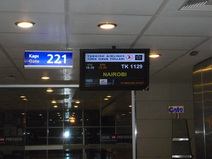 |
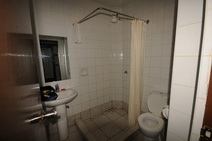 |
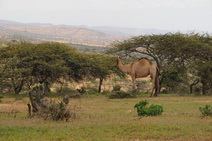 |
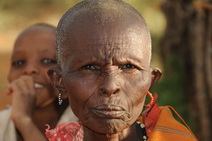 |
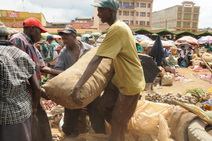 |
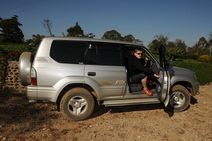 |
 |
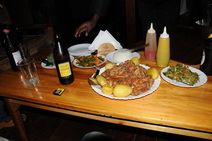 |
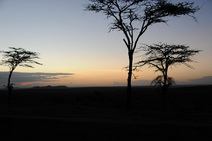 |
Nové funkce: Typy uživatelů a jejich hodnocení






